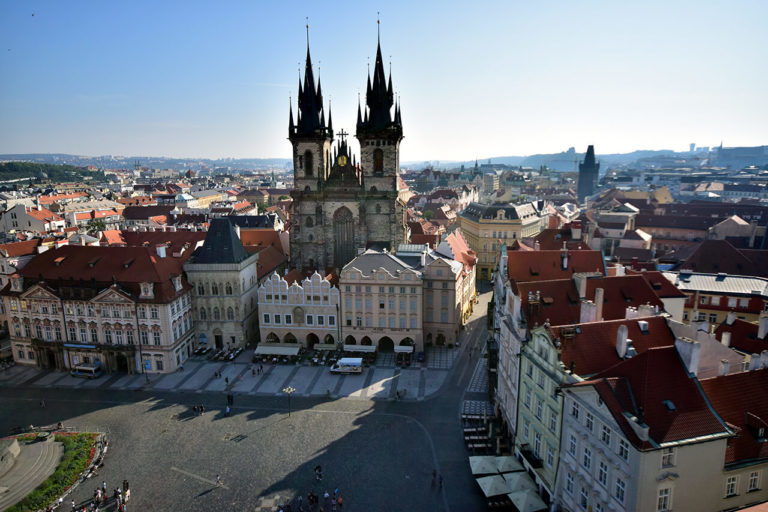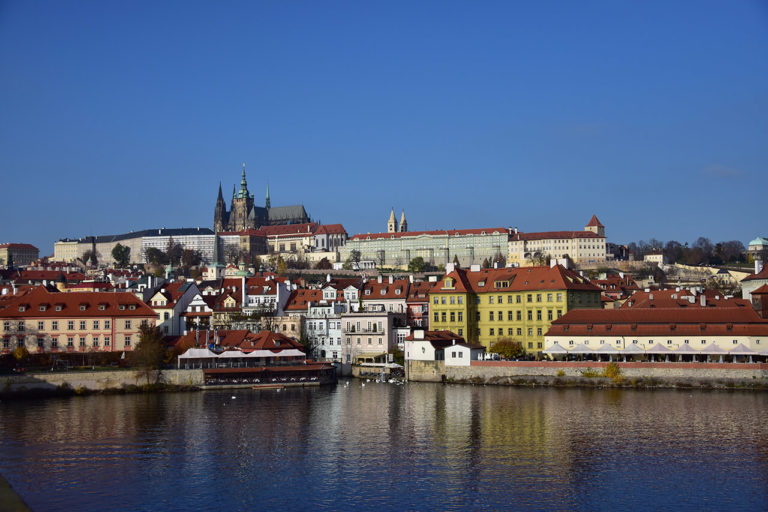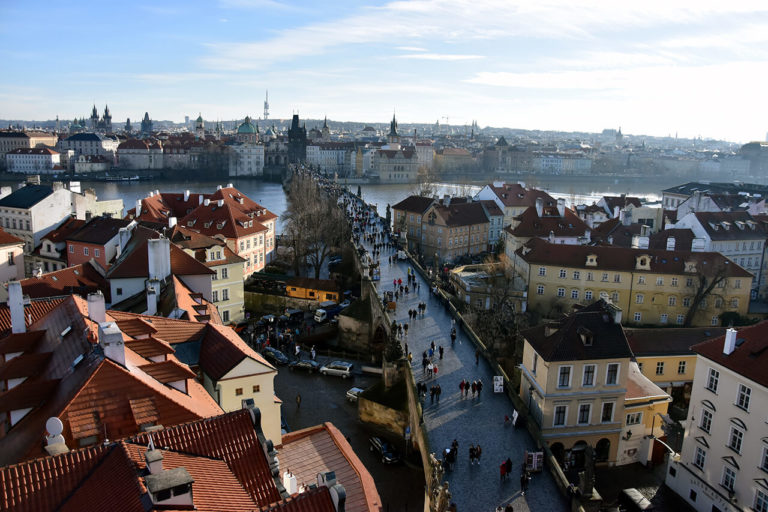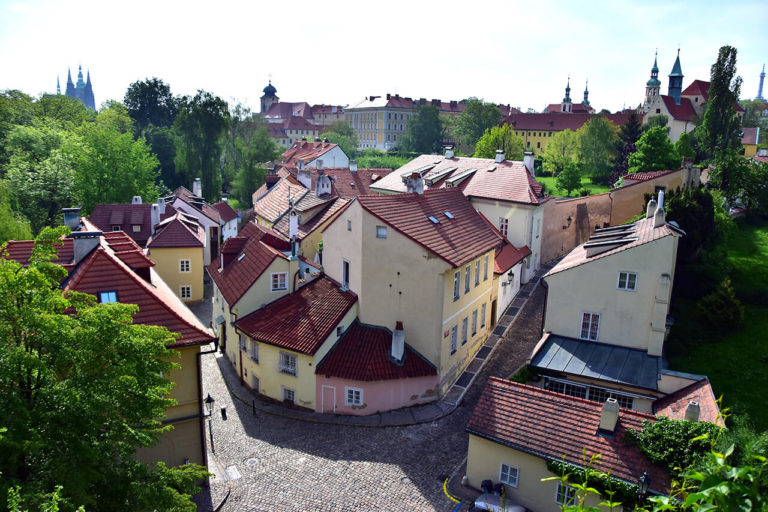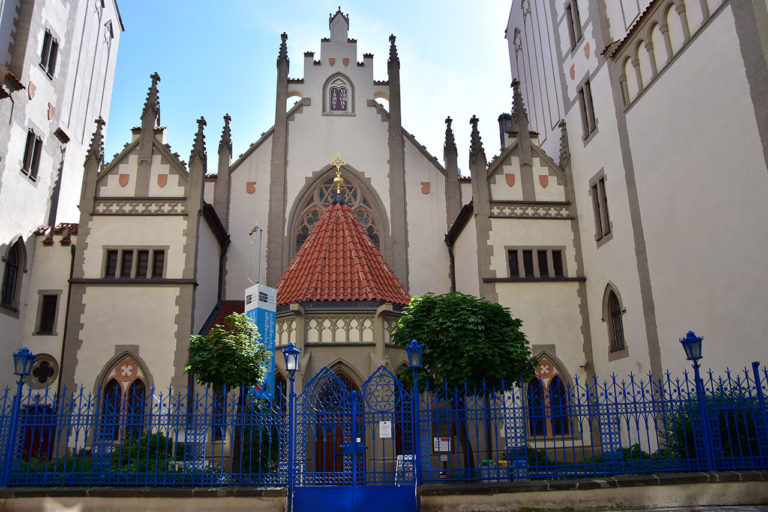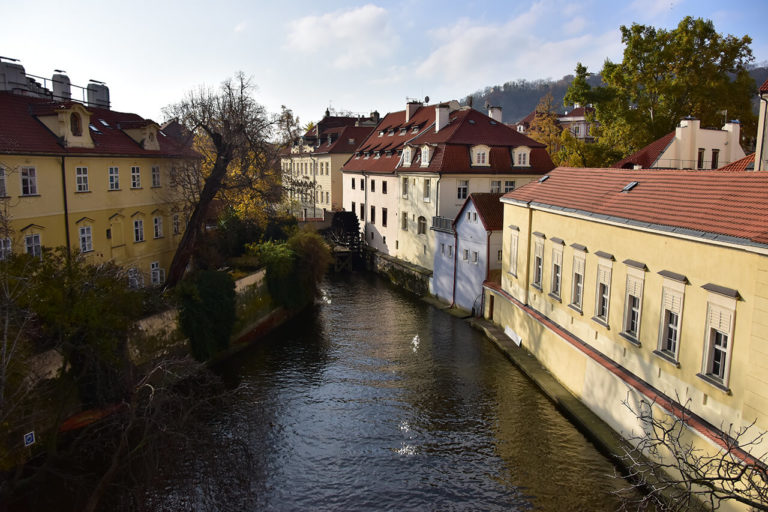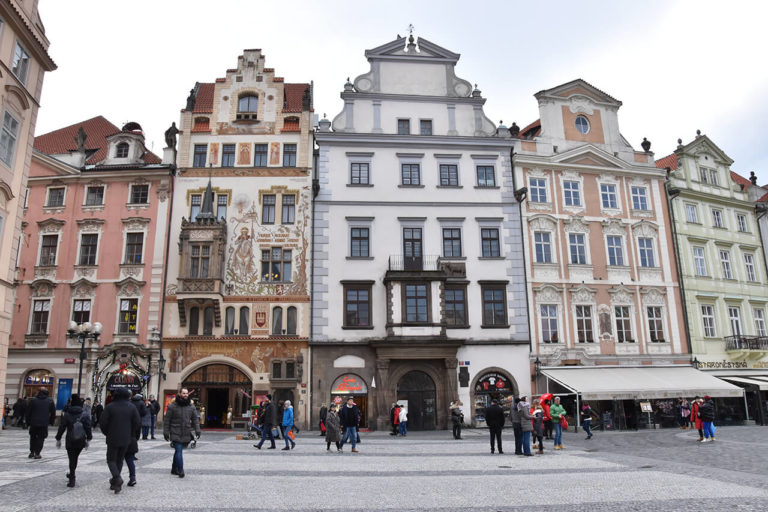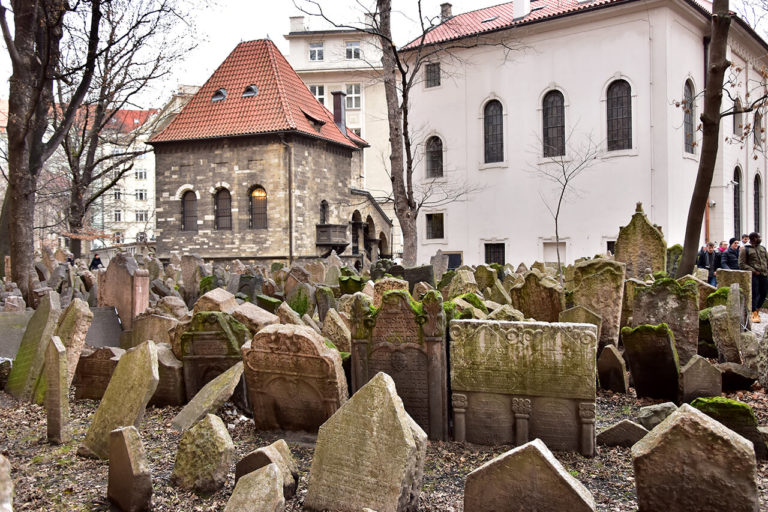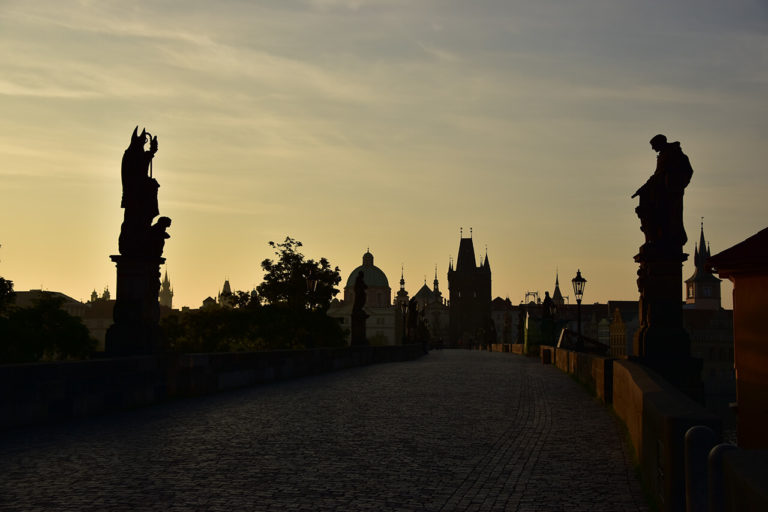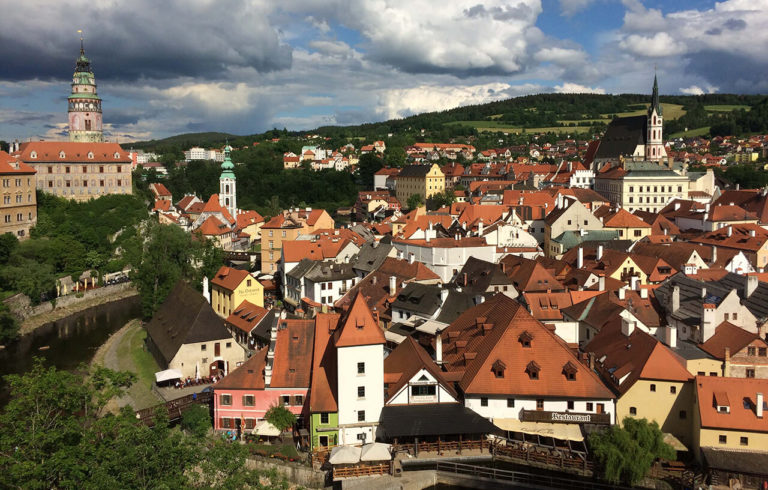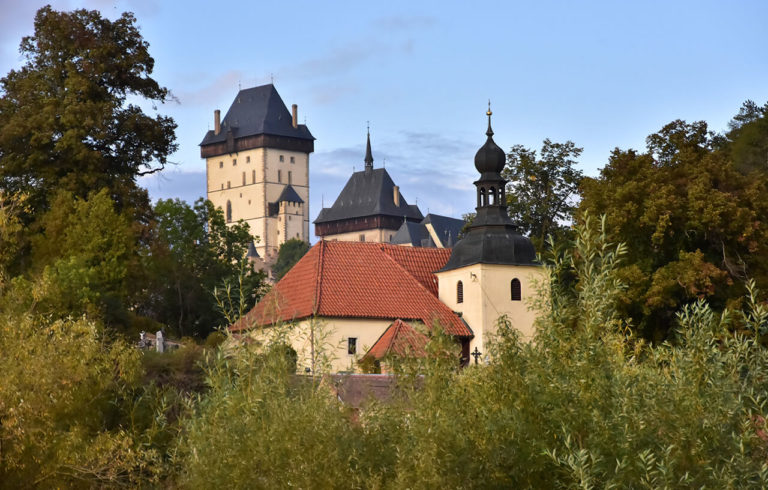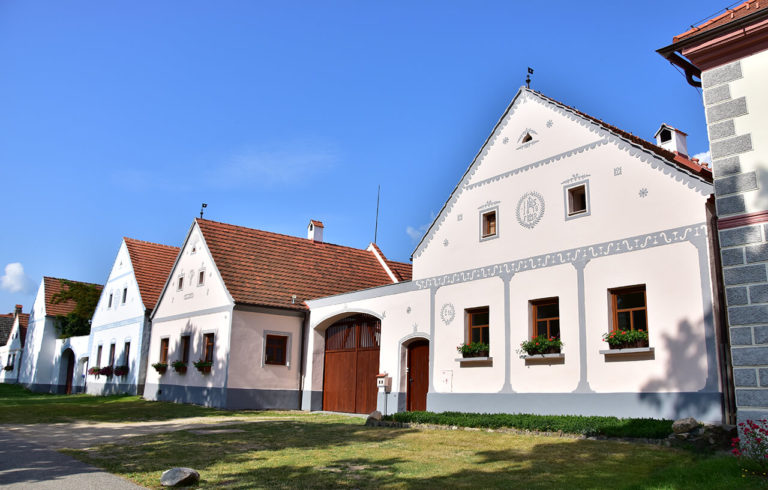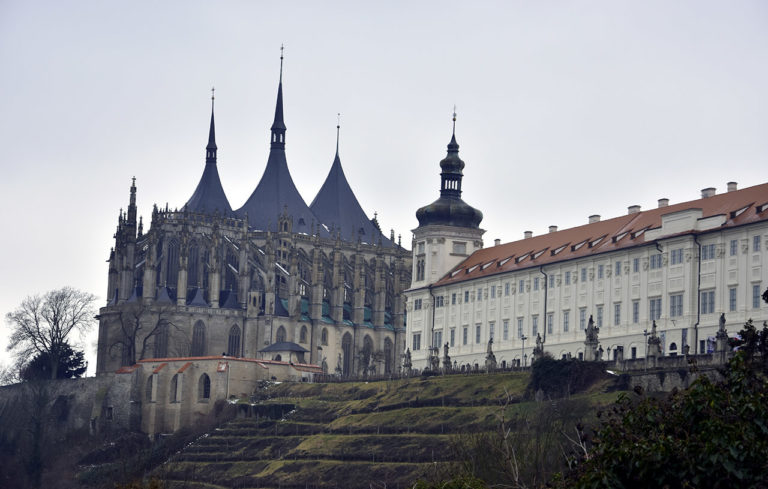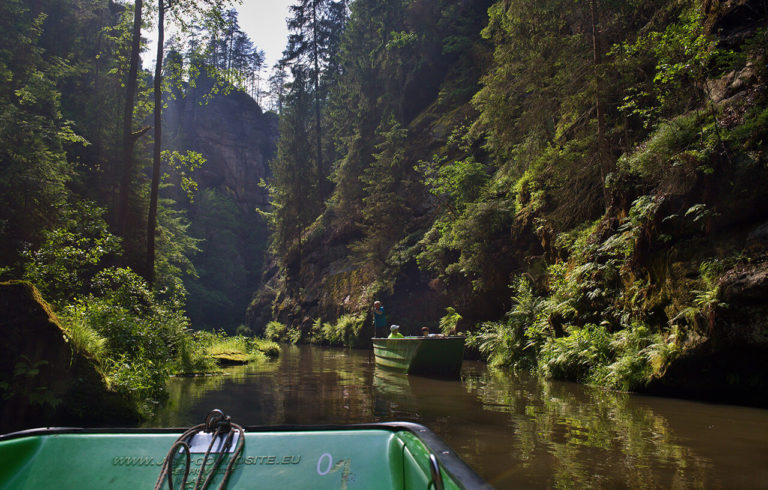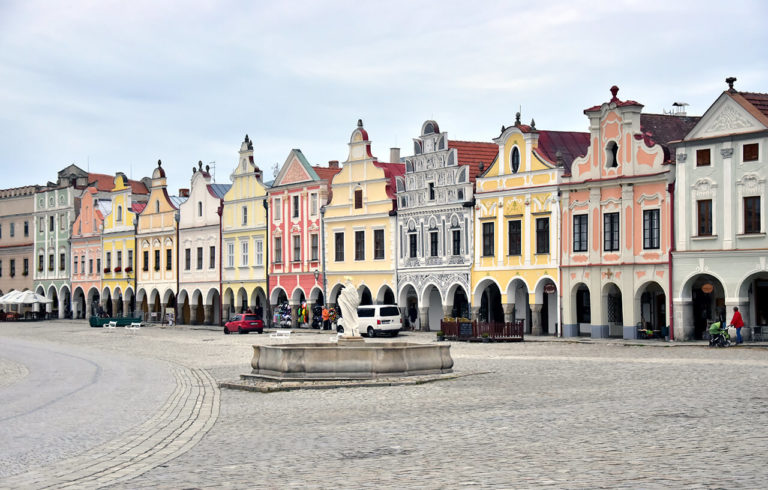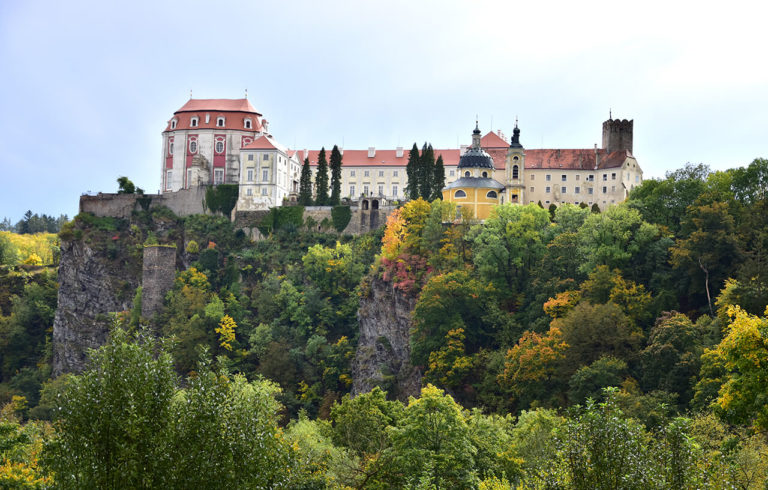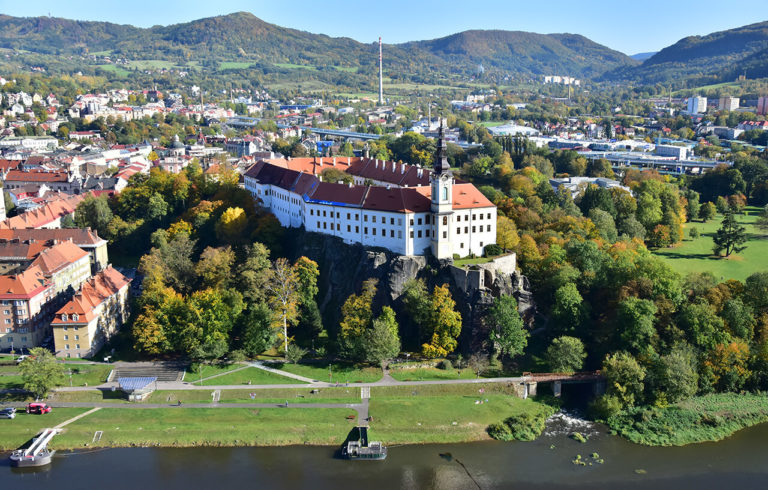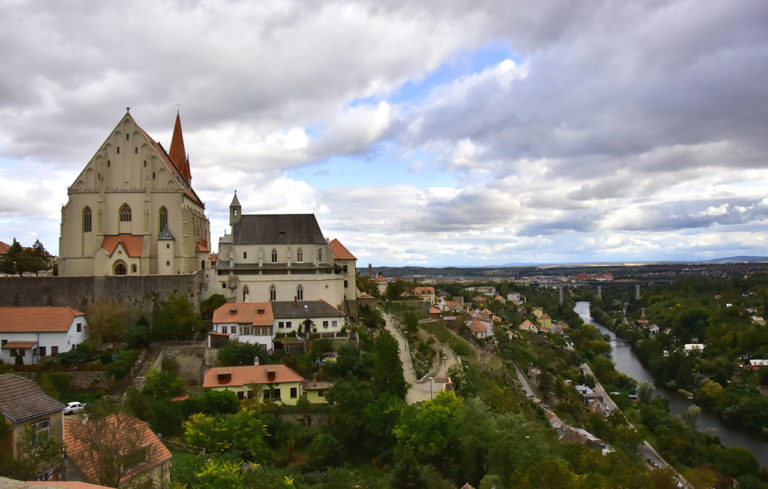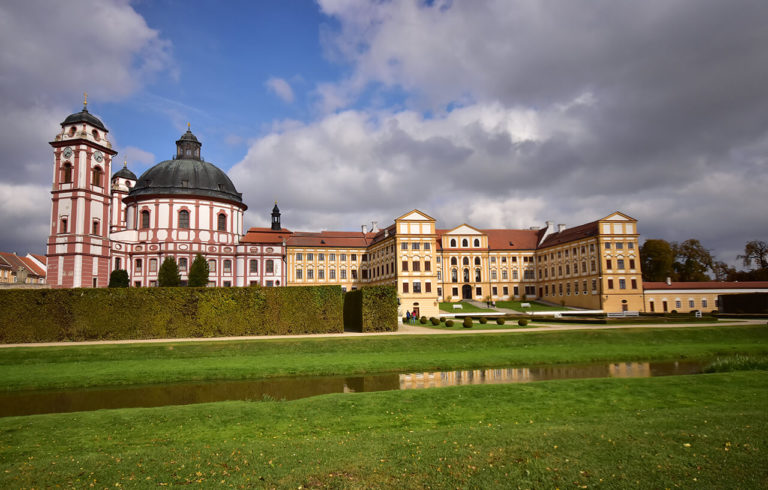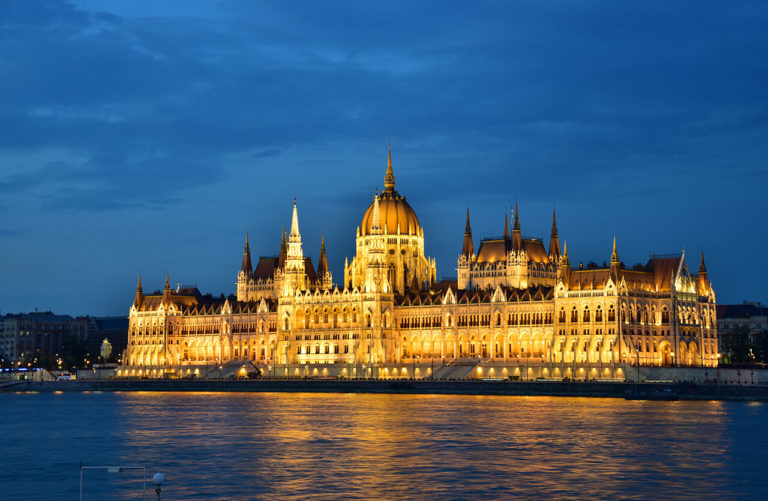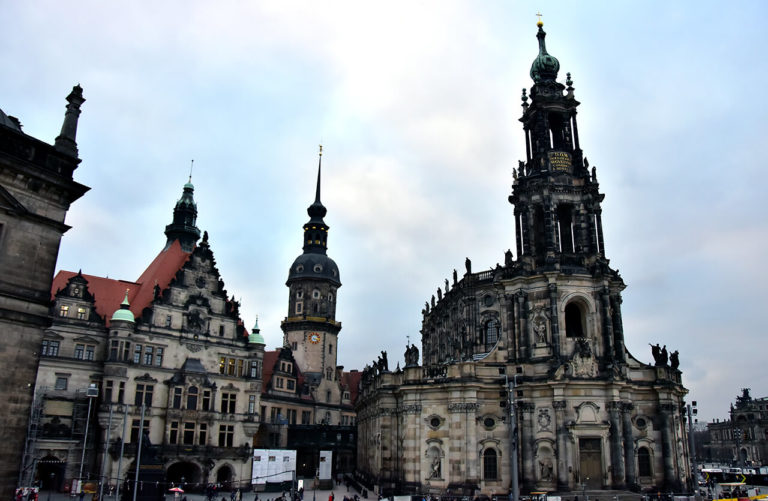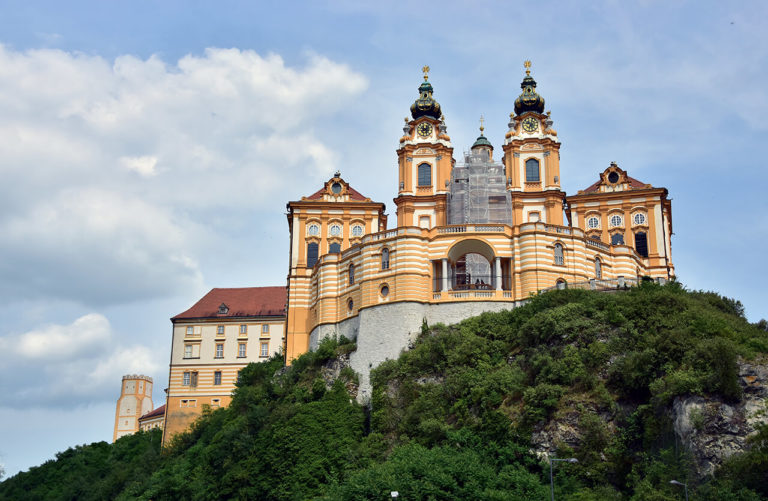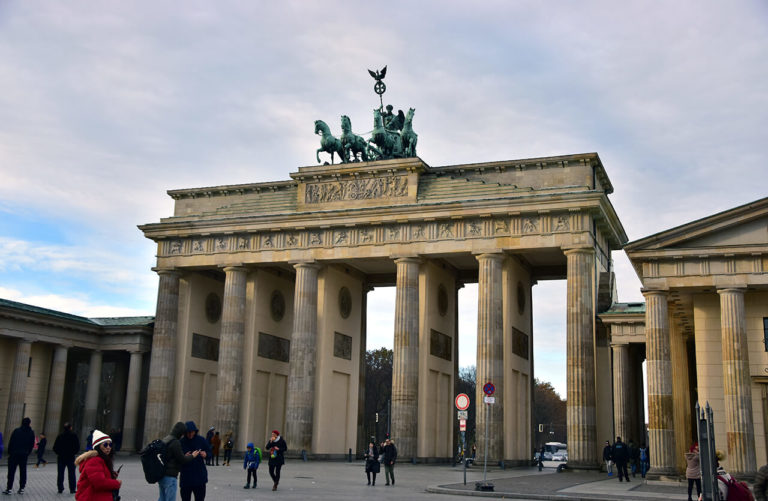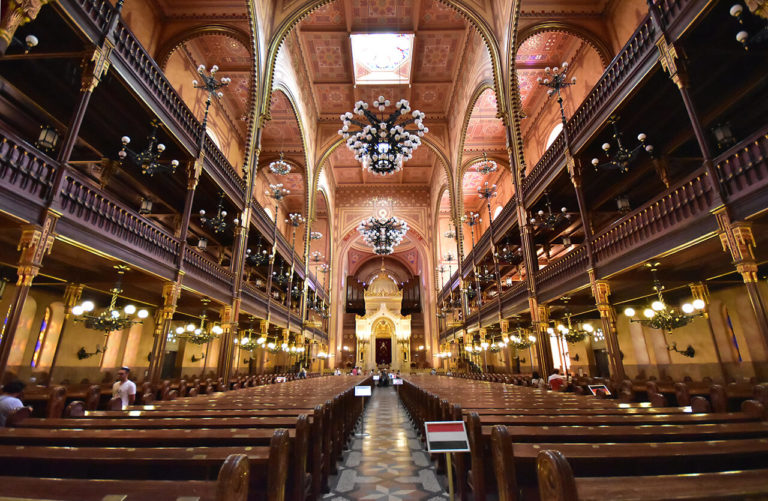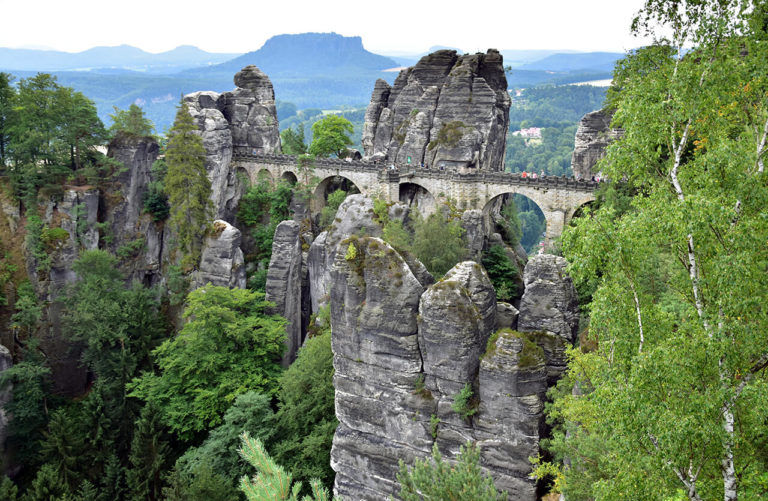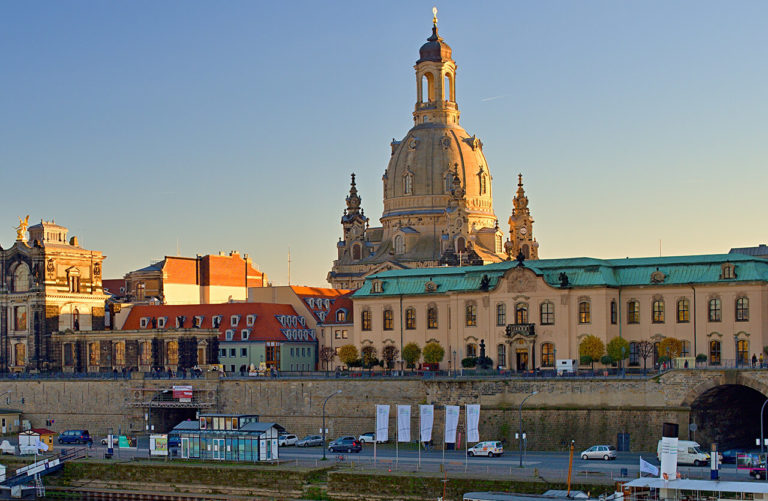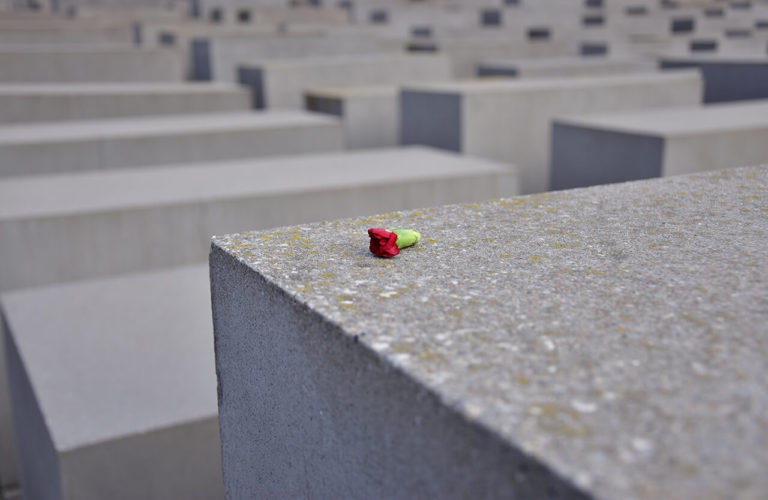patriot
travel
a luxury full service family run travel agency
with more than 25 years of experience in the
business
czech republic tours
prague
Downtown Prague
Prague castle
jewish prague
Vysehrad Lesser town Petrin hill
Foodie tour
WWII tour of Prague
WALKING TOUR OF DOWNTOWN PRAGUE
approx. 3,5 hours | included: guide
This tour is a perfect introduction to the downtown area which is best seen while walking. You will walk the cobblestone streets of the Old Town and see where the former border between the Old Town and the New Town used to be located.
While standing on the Old Town Square famous for its Astronomical Clock, you can admire the 12 apostles hourly and the whole mechanism can be explained to you in detail. The oldest house in the city is also located here – it dates back to the 14th century. You will see the statue of Jan Hus in the middle of the square, the Kinski Palace which houses a gallery now and every single house on the square has a story worth telling. The twin towers of the Tyn Church are not part of the square but they are best seen from there and you will be amazed that such a mighty church can have such a small entrance.
You may choose to relax over a cup of coffee or a glass of beer at the old market place Ungelt before you continue towards the Powder Tower where the city ended seven centuries ago. Another “must see” is the Municipal House built in art nouveau style. You can either enjoy a concert in its elegant Smetana Hall or just have refreshments at one of its three restaurants after the tour.
You will continue to the bottom of Wenceslas square that witnessed the Velvet Revolution in November 1989 – the overthrow of communism. You will also pass the colourful fruit and vegetable market, then walk back to the Old Town Square and along the pedestrian Charles street to another “must” in Prague – the Charles Bridge. Not only it is the best place for taking pictures, but each of its 30 statues has its own story. By the time you finish listening to the stories, you are ready for a well-deserved rest at one of the many cafes along the Vltava River.
WWII tour of Prague
approx. 3,5 hours | included: guide, vehicle support, entrances
A tour of Prague’s darkest days: the terror of Nazi occupation and the fight to rid this city of the invaders. Prague was the key to Hitler’s plans for world domination.
Threatened with total obliteration, betrayed by the British and French, the Czech people took matters into their own hands.
Revisit the battleground of the Old Town, witness the power of Nazi propaganda. Explore the last hideout of Prague resistance beneath the city and see previously hidden documentary evidence… Meet the few brave men, flown in from Britain to assassinate the Nazi „Butcher of Prague“, the most dangerous man of the third reich (empire) and the architect of the final solution to the Jewish question, Reinhard Heydrich.
Visit some of Prague’s streets that were marched by German military parades during the occupation. Learn astonishing facts about the spy game of the British secret service and the Czech resistance.
Discover the breath-taking details of the Prague Assassination of the head of Nazi SS and SD forces, Reinhard Heydrich.
Motto
Last words of the parachutists:
“We will not surrender. Never. We are Czech.”
An authentic site of a significant World War II battle in Prague, in a long-time concealed shelter, which was provided by Czech Orthodox church to Czechoslovakian parachutists from 27th May 1942 – 18th June 1942 after Reinhard Heydrich´s assassination. The military operation against Heydrich called “Anthropoid” was waged by Czechoslovakian exile government in London an belongs to “the most important acts of resistance in European sense” (V. Havel, 1992).
The mission of the Memorial:
is primarily to provide truthful interpretation of the Heydrich´s terror epoch and emphasis of the testimony to reverence and admiration to the soldiers and participants of the non-communist resistance, emphasis of the testimony to their voluntarily and even involuntarily sacrifice for freedom of the Czechoslovakian Republic in the time of Nazi occupation (1938 – 1945).
The Memorial consists of:
• The Czech Orthodox cathedral of saints Cyril a Methodeus
• The Crypt under the cathedral – sacred place
• Permanent exhibition in the hall
• Lecture hall and videoroom
You can also visit the Army Museum if it is of your interest (the museum is temporarily closed due to reconstruction)
The Army Museum Zizkov
The Army Museum is located in Prague-Zizkov, in the historic facilities of the National Liberation Monument. The exposition is divided into three large sections. The first is dedicated to the period of the World War 1 (1914 to 1918), the involvement of Czech and Slovak people in the war, and the political and military events that resulted in the constitution of the independent Czechoslovak Republic.
The second section is dedicated to the Czechoslovak republic and its armed forces between the world wars, and the third section maps the period of the World War 2, and the involvement of the Czech and Slovak people in the military operations, home resistance and other events aimed at restoring the independence of Czechoslovakia.
The museum displays the history of the 1st, 2nd, and (since February 2003) also the 3rd anti-communist resistance, the history of the Czechoslovak army between 1918 and 1939, and the persecution of the Czechoslovak soldiers after the coup in February 1948. In addition to weapons, the exhibitions show many unique uniforms, banners, marks of distinction, and also personal memorabilia of the Czechoslovak presidents and leading army representatives.
You can be taken to a shooting range in Kobylisy, the execution ground during the WWII, over 500 people linked with the “Operation Anthropoid” were shot dead there in 1942.
FOODIE TOUR
approx. 3,5 hours | included: guide, food tastings
Each country has its own specific meals and typical street food and it is difficult to decide which one is worth tasting and which should be avoided.
In Prague, you can taste the typical Czech as well as the international cuisine.
Our guide will help you to choose the best Czech delicacies to taste while walking through the historical Downtown area or the Lesser town.
Depending on your taste, you can try some of the typical Prague street food, such as Prazska sunka (Prague ham which is being roasted in front of you) grilovaná klobása (grilled Prague sausages with mustard and bread), trdelnik (sweet pastry in a tube shape that can be filled with chocolate, icecream or whipped cream), utopenec (pickled sausage with onion), hermelin (pickled surface-ripened cheese), langos (deep fried dough with garlic, cheese or other toppings), palacinky (crepes with fruit, icecream or whipped cream), vafle (waffle with icecream and whipped cream), chlebicky (sliced baguette with various toppings typical for this region) and of course Czech beer, wine, hot wine or Kofola, traditional Czech soda.
You may also choose to add lunch or dinner at the end of the tour. You will be taken to a Czech restaurant where you may taste the most typical Czech meals, such as svickova (roast sirloin of beef with steamed dumplings and cream of vegetable sauce), vepro knedlo zelo (roast pork with bread dumplings and stewed cabbage), bramboraky (potato pancakes, traditionally served with sour cabbage), pecena kachna (roast duck with bread or potato dumplings and braised red cabbage) and much more again topped with Czech beer.
LESSER TOWN, PETRIN HILL, VYSEHAD FORT TOUR WITH A VEHICLE SUPPORT
approx. 3,5 hours | included: guide, vehicle support, entrances
The Lesser Town was founded in 1257 on the slopes below the Prague castle and it is the part of Prague least affected by recent history.
NERUDA STREET
Named after the poet and journalist Jan Neruda, who lived at No 47 in the House of Two Suns, it is the picturesque narrow street that leads up to Prague castle as a part of Royal Way. There is a splendid selection of heraldic emblems on the houses, for example the Red Eagle, the Three Fiddles, the Golden Horseshoe, the Green Lobster, the White Swan and many others.
There are also a number of grand Baroque buildings there, such as the Thun-Hohenstain Palace, the Morzin Palace, and the Church of Our Lady of Unceasing Succour.
LESSER TOWN SQUARE
As this was originally a market place, it has always been the centre of life in the Lesser Town with official buildings and restaurants. The important buildings include the St. Nicholas Church, the Town Hall, the Sternberg Palace and the Smiricky Palace. On the facade of the Baroque Kaiserstain Palace there is a bust of the great Czech soprano Emma Destinn.
ST. NICHOLAS CHURCH
It is the dominant of the Lesser Town Square and one of central Europe’s finest baroque buildings begun by Kristof Dientzenhofer, continued by his son Kilian and finished by Anselmo Lurago. The statues, frescos and paintings inside the church are made by leading artists of the day, such as Karel Skreta and Johann Kracker.
KAMPA ISLAND
Known as the Venice of Prague. Kampa Island has been formed by a branch of the River Vltava called the Devil’s Stream. Originally there were gardens only on the island but it was also used for washing clothes and bleaching linen. In the 17th century the island became well known for its pottery markets. It is an elegant part of Prague with a village-like character.
PETRIN HILL
With the height of 318 m the Petrin Hill is a network of eight parks offering magnificent panorama views of Prague. Most of the vineyards from the 12th century were transformed into gardens and orchards by the 18th century and today it is a great place for quiet walks easily accessible from Hradcany and Strahov or by a funicular railway from Ujezd. Up the hill there is the Stefanik Observatory, the 60m high Observation Tower – an imitation of the Eiffel Tower, the Hunger Wall that was built by the poor of the city in return for food in the 14th century, the Mirror Maze, the Church of St. Lawrence and the wooden Church of St. Michael that was built in 17th century in Ukraine and later dismantled and brought to Prague.
VYSEHRAD FORT
This was originally Chrasten Castle, which was established at some time in the 10th century, that also became a Premyslids mint and the first Czech King Vratislav even dwelled here for a while. Vysehrad’s importance was diminishing from the second half of the 12th century and most of the buildings were destroyed when the Hussites defeated Zikmund. It was finally rebuilt into a Baroque fort after 1650.
There are many historical buildings in the Vysehrad complex. For example, St. Peter and Pavel Capitular Cathedral, St. Martin Romanic Rotunda, cemetery with Slavin (special cemetery for famous artists, writers, painters, composers and other important people), casemates of the Baroque fort, foundations and remains of Romanic and Gothic buildings as well as constructions from recent times.
Vysehrad also offers extensive parks with sculptures, views over Prague and a summer amphitheatre. The Vysehrad Gallery exhibits paintings, sculptures and photography. This place is veiled with many very old legends.
WALKING TOUR OF THE JEWISH DISTRICT
approx. 3,5 hours | included: guide, entrances
The Jewish Museum in Prague was founded in 1906 with the aim of preserving precious art objects and documents related to the history of the Czech Jewish communities.
We can start our visit at the Pinkas Synagogue – it was turned into the Memorial of Jewish victims of the Second World War. Almost 80.000 names have been inscribed on the walls. It is an extremely simple but touching monument. A small room on the top floor houses a precious collection of drawings done by the children of the Terezin concentration camp.
Next to the Pinkas Synagogue there is the Old Jewish Cemetery where almost 12.000 tombstones are jumbled together among trees. The oldest gravestone is that of Rabi Avigdor Kara who died in 1439. Among the graves of the distinguished Jews, we can find the names of Marcus Mordecai Maisel (died in 1601), David Oppenheim (died in 1736) and the Rabi Loew, known as Maharal, whose writings became an inherent part of Hasidic teaching.
Flanking the exit from the cemetery there are the former Ceremonial Hall and the Klausen Synagogue. The former features display explains activities of the Burial Society Hevrah Kaddishah [founded in 1564], the latter, dating back to 1694, houses the permanent exhibition „Jewish Customs and Traditions“.
From the Klausen Synagogue we have an easy short walk to the Old-New Synagogue, which is architecturally the most interesting building of the ghetto and also one of the oldest preserved synagogues in Europe and it is still in use. Its main hall, one of the finest examples of the Cistercian Gothic style in Prague, is a double-aisled space with references to the figure 12, both in its plan and decorations.
We will pass by the High Synagogue which is closed to the public and the Jewish Town Hall founded by Maisel in the late 16th century with the Hebrew clock showing the time backwards.
Our next stop can be the Maisel Synagogue which was commissioned by one of the most influential figures of the ghetto – the mayor Marcus Mordecai Maisel who died in 1601. The exhibition covers the history of Jews in the Czech state since its very beginning up to the late 18th century, the time of emancipation.
We continue our walk to the Spanish Synagogue which was built in 1868 in a Moorish style on the site of demolished Altschul. The richly polychrome and gilded stucco arabesques and other oriental motifs together with an organ make this interior very different from all the other buildings run by the Jewish Museum. The second part of the exhibition „History of Jews in Bohemia and Moravia“ has been presented here.
Our guides are very well versed in Jewish history and will be happy to answer any of your questions. Jewish guides can be arranged on your request only.
PRAGUE CASTLE TOUR WITH A VEHICLE SUPPORT
approx. 3,5 hours | included: guide, vehicle support, entrances
The Prague Castle complex is another must. The tour will give you a feel of the whole hilly part of the city before you walk through the Castle complex. Your private guide will meet you at the hotel and you will be driven to the Strahov Monastery to enjoy one of the best views over the city.
You may also visit the Strahov Library – one of the most beautiful interiors in Prague. A private visit of the two stunning rooms can be arranged upon your request. A lot of historical movies have been shot here, e.g. the famous Milos Forman’s film “Amadeus”.
You continue to the New World area which used to be the home of artists and the small houses are really charming. After getting off the car at the Castle square, you can admire the Archbishop’s palace and the main entrance to the Castle complex. Then you continue on foot to see the St. Vitus Cathedral with its stain-glass windows, the Royal Palace with Vladislav Hall and the unforgettable and quaint Golden Lane.
The archaeological research and the oldest written sources prove that the Prague Castle was founded around the year 880 by Prince Borivoj of the house of Premyslides. The castle site was fortified with a moat and a rampart of clay and stones. The first walled building was the Church of Virgin Mary. Other churches, dedicated to St. George and St. Vitus, were founded in the first half of the 10th century.
From the 10th century Prague Castle has been not only the seat of the head of state, the princes, later kings and nowadays presidents, but also of the highest representative of church, the Prague bishop. The basilica of St. Vitus, built on the site of the original rotunda, has been the main church since the 11th century and the relics of the patron saints of the land are kept here. The period of the rule of King and later Emperor Charles IV (the middle of the 14th century) was a time of prosperity for Prague Castle. The royal palace was magnificently rebuilt, the fortifications strengthened and the church of St. Vitus was based on the model of French Gothic cathedrals.
Another important period was the second half of the 16th century, during the rule of Rudolph II. The emperor settled permanently in Prague Castle and began to turn it into a grand and dignified centre of the empire. He founded the northern wing of the palace, with today’s Spanish Hall, to house his precious artistic and scientific collections. The Prague defenestration in 1618 started a long period of wars, during which Prague Castle was damaged and robbed. In the second half of the 18th century the last great rebuilding of the Castle was carried out, making it a prestigious castle-type seat.
After the foundation of the independent Czechoslovak Republic in 1918, Prague Castle again became the seat of the head of state. It is an important cultural and historical monument. The crown jewels, precious Christian relics, art treasures and historical documents are kept here. Events important for the whole country have taken place within its walls.
Hence Prague Castle is the embodiment of the historical tradition of the Czech state, linking the present with the past.
SPECIAL TOURS, ADDITIONAL OPTIONS
Strahov library private tour
Municipal house private tour
special dinners
boat rides
foodie
hands on
back in time
vip airport service
adventure experiences
fun for kids
Strahov library private tour
Strahov Monastery (this can be added to the Castle tour upon request)
approx. 30 minutes | included: guide, entrances
It was founded in 1140 on Strahov Hill and it is considered as one of the oldest monasteries. You enter the complex through the baroque gate with a statue of St. Norbert, the founder of the St. Norbert’s Order.
When you decide on a private tour of the monastery (highly recommended), you can explore the two very unique and beautiful library rooms in depth. Your guide can tell you many stories and show you the illustrations in some of the books. When you go with other regular tourists, you just peek into the rooms from the doorway. This Prague interior is really worth visiting and highly recommended, especially after its complete cleaning and renovation which was finished recently.
The two amazing rooms are:
the Theological Hall dating back to 17th century. It is decorated with a stucco ceiling with frescos dedicated to science, education and different proverbs. We admire the rich collection of more than 15 000 books, astronomical and geographical globes, precious old songbooks and unique pieces of furniture.
The 18th century Philosophical Hall occupies two floors and it is really a temple of sciences. The book cabinets – home to 50 000 books – were originally designed for a different monastery and since they represent great example of baroque woodcarving, they found their home here and the hall was built according to their size. The magnificent fresco called “Intellectual Progress of Mankind” is the icing on the cake of this private tour.
You will also see the Cabinet of Curiosities and the Church of the Assumption of the Virgin Mary where Mozart used to play the organ during his Prague visits. Stunning view of Prague panorama can be admired from the backyard of the Monastery.
Municipal house private tour
approx. 1 hour | included: guide, entrances
History
The Royal Court palace used to be located on the site of the Municipal House. From 1383 until 1485 the King of Bohemia lived on the property. After 1485, it was abandoned. It was demolished in the early 20th century. Construction of the current building started in 1905. It opened in 1912. The building was designed by Osvald Polívka and Antonín Balšánek.
The Municipal House was the location of the Czechoslovak declaration of independence.
Architecture and art
The building is of the Art Nouveau architecture style, exterior has allegorical art and stucco. There is a mosaic called Homage to Prague by Karel Špillar over the entrance. On either side are allegorical sculpture groups representing The Degradation of the People and The Resurrection of the People by Ladislav Šaloun. Smetana Hall serves as a concert hall and a ballroom. It has a glass dome. There are artworks by Alfons Mucha, Jan Preisler and Max Švabinský, too.
Today
The building is used as concert hall, ballroom, civic building, and a place for cafes and restaurants. Many of the rooms in the building are closed to the public and open only for guided tours.
Tour route:
Smetana Hall – Confectionery – Moravian Slovak Parlour – Božena Němcová Parlour – Oriental Parlour – Grégr Hall – Palacký Hall – Mayor’s Hall – Riegr Hall – Sladkovský Hall – American Bar
Special dinners
Enjoy dinner with special entertainment
Folklore dinner show
Our driver will pick you up at the hotel and will take you to the folklore restaurant, where you will be welcomed warmly with a sip of the famous Czech herb snaps – Becherovka. Friendly staff will take care of you during the whole night. You will then have opportunity to see and try the typical Czech dances and you can even try to sing in Czech!
You will be surrounded by the Czech folklore musicians playing the cymbalo, violins and contrabass.
The dancers will show you the typical Czech dances.
This whole night is full of fun since other people from around the world usually participate.
Three course local dinner and unlimited beer, wine and soft drinks are served.
Sweet Prague dinner cruise
Experience the unique 3-hour Sweet Prague cruise on the Lužnice boat, the most luxurious boat of its kind in the city. The cruise is designed for those seeking a first-class experience, with privacy and excellent service. The boat departs at 8:00 PM from the Čech Bridge and cruises past Vyšehrad Hill, the magnificent Prague Castle, Charles Bridge, the National Theatre and many other stunning sites beautifully illuminated in dark.
You will be seated to your places and you can enjoy the dinner and views in the main salon, or in the boat’s bow, where you’ll have panoramic views. Live piano music will gently serenade you as you are served from an a la carte menu with your choice of dishes.
What’s Included:
- 3-course a la carte dinner (starter, main course and dessert)
- A choice of 3 dinner options (for vegetarian menu, please advise when booking)
- Drinks (aperitif, wine, mineral water, coffee and tea)
- Live piano music
- A bottle of wine per 2 persons
Dinner show in a medieval tavern
Spend an evening in the heart of Prague enjoying 5-course medieval dinner with unlimited supply of ordinary local wines, beer and soft drinks.
Its harsh and yet so romantic atmosphere will breathe on you in the tavern from all sides. There will be plenty to see, what to listen to and most importantly, what to taste. You will be entertained by swordsmen, jugglers, and belly dancers, accompanied by contemporary music, wine and beer. The evening will flow and you will also eat in the spirit of the times, with your hands! The only disappointment could be the return back to the present times!
boat rides
Choose the river cruise and admire the city from the Vltava river
Sweet Prague dinner cruise
Experience the unique 3-hour Sweet Prague cruise on the Lužnice boat, the most luxurious boat of its kind in the city. The cruise is designed for those seeking a first-class experience, with privacy and excellent service. The boat departs at 8:00 PM from the Čech Bridge and cruises past Vyšehrad Hill, the magnificent Prague Castle, Charles Bridge, the National Theatre and many other stunning sites beautifully illuminated in dark.
You will be seated to your places and you can enjoy the dinner and views.
in the main salon, or in the boat’s bow, where you’ll have panoramic views. Live piano music will gently serenade you as you are served from an a la carte menu with your choice of dishes.
What’s Included
- 3-course a la carte dinner (starter, main course and dessert)
- A choice of 3 dinner options (for vegetarian menu, please advise when booking)
- Drinks (aperitif, wine, mineral water, coffee and tea)
- Live piano music
- A bottle of wine per 2 persons
Private one-hour river cruise
Enjoy one-hour river cruise on a small boat without other tourists. A cruise is truly one of the most delightful ways to see the beauties of the historical centre of Prague. During the cruise you will get unforgettable views of Prague. The guide will explain in detail what you are looking at.
There will be drinks ready for each client during the cruise (local wine, beer or soft drinks).
You will see the magnificent Charles bridge with its towers and statues, the majestic Prague castle complex including the St. Vitus cathedral, the National theatre and other sights close to the river from a specific point of view.
Private one-hour river cruise
A cruise is truly one of the most delightful ways to see the beauties of the historical centre of Prague. During the cruise you will get unforgettable views from the deck, you can enjoy the commented tour in English and other seven languages.
Each client gets one drink during the cruise (local wine, beer or soft drink). The ship is equipped with a bar in case you would like another drink during the boat ride.
You will see the magnificent Charles bridge with its towers and statues, the majestic Prague castle complex including the St. Vitus cathedral, the National theatre and other sights close to the river.
Jazzboat dinner cruise
Take in the most beautiful sights in Prague on this 2.5-hour cruise on the Vltava River. Listen to quality jazz music while drifting through the centre of Prague and indulge authentic Czech cuisine with an optional 3-course meal. The boat departs every evening at 8:30 PM.
You’ll be welcomed onto the boat with a drink so you relax into the party atmosphere. After boarding, the concert begins. There are 3 sets of music performing a variation of jazz styles, with 2 breaks. Alongside the music, there is also a sightseeing tour included as you pass through the centre of this historical city. You can just sit and watch the sights going by.
This is the most relaxing and unique way to see the Prague sights.
What’s Included
- Welcome drink
- 3-course menu – optional (also available without dinner)
foodie
Prague tours for food lovers
Brewery tour in Prague – addition to one of the Prague tours
approx. 1 hour ǀ Included: tour and beer tasting, one regular beer, one side dish, guide
You probably know that the Czech Republic is a well-known producer of the best kinds of beer.
For the beer lovers we are happy to introduce our special brewery tour of Prague.
The guide will take you to a microbrewery in the New town for a private tour of the brewery and beer tasting. You will learn about the production of the most famous Czech drink. The in-house guide will show you the brew room, the open fermenting room and the lager cellar.
You will taste 4 samples of beer that is produced in this brewery. After the beer tasting you can choose the regular size of the beer you liked the most and have it along with a tasting portion of a traditional Czech beer titbit.
2-hour Wine Degustation
Relish your Prague visit with a different perspective and spend two inspiring and enriching hours in a cosy wine cafe accompanied by a sommelier with great experience.
You will learn about the specific taste and aroma of the excellent Czech wines from Bohemia and Moravia. You will savour several samples of whites and reds.
For comparison you will also taste wines from the nearby countries famous for wine (Austria, Germany). The 6 wine samples you will taste are served with a variation of cheese and sausages, bread and water. The wine producing in the Czech republic has a 1000 – year long tradition and for example the Kutna Hora winery was one of the first wineries in Europe. The Pinot noir variety which you will also taste has been grown here since 1142. During the reign of the Czech King and the Holy Roman Emperor Charles IV (14th century) the wine production was spread all over the land and process of wine making was improved. Charles IV was raised in France and he learned a lot about wine there. Later he brought the knowledge to the Czech lands.
Foodie tour in Prague
approx. 3,5 hours | included: guide, food tastings
Each country has its own specific meals and typical street food and it is difficult to decide which one is worth tasting and which should be avoided.
In Prague, you can taste the typical Czech as well as the international cuisine.
Our guide will help you to choose the best Czech delicacies to taste while walking through the historical Downtown area or the Lesser town.
Depending on your taste, you can try some of the typical Prague street food, such as Prazska sunka (Prague ham which is being roasted in front of you) grilovaná klobása (grilled Prague sausages with mustard and bread), trdelnik (sweet pastry in a tube shape that can be filled with chocolate, icecream or whipped cream), utopenec (pickled sausage with onion), hermelin (pickled surface-ripened cheese), langos (deep fried dough with garlic, cheese or other toppings), palacinky (crepes with fruit, icecream or whipped cream), vafle (waffle with icecream and whipped cream), chlebicky (sliced baguette with various toppings typical for this region) and of course Czech beer, wine, hot wine or Kofola, traditional Czech soda.
You may also choose to add lunch or dinner at the end of the tour. You will be taken to a Czech restaurant where you may taste the most typical Czech meals, such as svickova (roast sirloin of beef with steamed dumplings and cream of vegetable sauce), vepro knedlo zelo (roast pork with bread dumplings and stewed cabbage), bramboraky (potato pancakes, traditionally served with sour cabbage), pecena kachna (roast duck with bread or potato dumplings and braised red cabbage) and much more again topped with Czech beer.
Cooking class
approx. 4 hours | included: roundtrip transfers, chef supervision, soft drinks, 3-course meal
This experience offers not only taste of traditional Czech dishes but also the joy of preparing the meal on your own under a supervision of a professional chef. You will be picked up in your hotel and taken to the cooking studio where you will meet your chef for today. Before you start preparing the meal, you will go to a local market where you can taste vegetable, fruit, cheeses, bread, sausages and other things unusual in place where you come from. While at the market, you will pick ingredients for the meals that you will prepare later. You will be making a three-course menu during the time. You can choose from several soups or starters, main dishes and desserts which you will savour later on.
After you are finished with cooking and eating the car will take you back to your hotel.
hands on
Prove your manual skills and gain a nice souvenir
Puppet making
approx. 1 hour | included: guide, puppet
The marionette making and marionette theatre have a long history in the Czech republic and it has always been enjoyed by kids as well as adults. During this workshop, you will take a tour of the theatre and create your own puppet from the beginning to the end. You can take it home as unique souvenir from Prague. You may choose from 15 different types of traditional Czech marionettes, each of them approximately 25 cm tall. The puppets are fully functional and you will be taught to decorate them the way you like. You can play your own shows while at home. This workshop is a perfect addition to the Prague touring for adults as well as for kids.
Glass blowing experience
During our guided tour of the Rückl glassworks, visitors may witness all the individual steps and traditional techniques of the glass-manufacturing process. Each stage of crystal production is explained and shown, including the art of mouth-blowing, delicate processes of the quality control, incredible craftsmanship of glass cutting and the painter‘s studio. Tours are available in English and German and take about 45 minutes. After the tour you can visit the local shop with the glassworks production.
Tour the Hands-on Glass Blowing Experience
Rückl Glassworks offers a unique experience. Along with the standard tour and introduction to all of the traditional techniques, visitors can now experience hands-on glassblowing. What’s so special about that? Under the guidance of the master glassmakers, you can now blow your own glass product as a souvenir commemorating your visit to the glassworks. In order to arrange everything perfectly, glass-blowing experience tours must be reserved at least two weeks in advance. It is good to schedule this in the begging of your Prague visit as it takes at least 36 hours to cool down and deliver the product. It’s a breath-taking experience you’re unlikely to forget.
back in time
Let us take you back a century to the time of a First republic
Vintage tram ride
approx. 35 minutes
It is said that the most beautiful view of the world is from a horse’s back. However, the most beautiful view of Prague is definitely from the tram. And who would not want to have a tram for himself at least once in his life? Not only for lovers of old and new trams, but also for admirers of the Prague this tour is so special. The route is usually a subject to change upon the clients´ interest and that it can be implemented in the itinerary logically. Usually, the tram passes by Lesser Town Square, National Theatre, Old Town, Cechuv Bridge, the river embankments and the Square of the Republic.
If you want the company of the accordionist let us know and he will play typical Czech songs during the ride
Vintage car ride
Enjoy one-hour ride through the historical and fascinating city of Prague in an old timer car. You will be taken to picturesque little streets and you will pass the monumental buildings like Prague Castle complex, National Theatre, Dancing house, Rudolfinum, Municipal house, St. Nicholas church, Charles Bridge and other magnificent sights of Prague. This might be a nice addition to one of the Prague tours.
vip airport service
When you arrive to the Prague Ruzyne airport (or you are departing from our city) we would be happy to treat you as a real noble people – once you walk out of the plane you will be taken to a VIP lounge.
You do not have to take care about anything – all will be done on your behalf. Just look for a person with your name on a sign when walking out of the aircraft. The airport personnel will pick up your luggage and load it to the vehicle waiting for you right in front of the lounge. They will collect your passports and will perform the passport check for you. You can have a rest and drink in the lounge during that time and when all is ready for your departure the driver will ask you to get into the car and will take to your hotel. The same service can be arranged for you when departing from Prague – it will save your time and make your stay a memorable one.
adventure experiences
Enjoy a day as locals do
Panoramic and Prague Castle City bike tour
approx. 2,5 hours | included: guide, bikes/e-bikes, helmets
Our Panoramic & Prague Castle Bike Tour takes you along the Prague’s Vltava River and through the beautiful Letna Park, which overlooks the city and provides excellent photo opportunities. It also serves as a backdrop to a broad historical overview of this magical city. You stop at the Royal Gardens and continue around the corner to Prague Castle, the World’s Largest Castle Complex, according to The Guinness Book of World Records. We continue on to Petrin Park, which provides more panoramic views of the city and from there it is all downhill and back to where we started.
In just a few hours, you’ll know Prague in a way that is not possible without a bicycle!
PANORAMIC CASTLE BIKE TOUR HIGHLIGHTS
- Ride along Vltava River
- Letna Park & Panoramic Views of Prague
- Prague Metronome, former location of World’s Largest Stalin Statue
- Kings Royal Gardens & Prague Castle
- Petrin Park & Hunger wall
- Memorial to the Victims of Communism
- Kampa Park
- Jewish Quarter & Old Town Square
One day bicycle tour to Karlstejn Castle
approx. 8 hours | included: guide, bikes/e-bikes, helmets, transfer back to Prague, entrances
Our Karlstejn Castle Bike Tour rolls you southwest of Prague along the Vltava and Berounka Rivers and through the Czech countryside to the gothic fortress built by King Karel IV to house the imperial jewels and his collection of holy relics. Karlstejn Castle, with its enchanting, monumental architecture is one of the most-visited castles in the country. We start the guided bike trip to Karlstejn from the hotel. Our cycling time to the castle takes about 3.5 hours. During our trip we will pass through several villages, making observation and refreshments stops. Upon our arrival at Karlstejn Village (population 800) we stop for lunch on your own in a traditional Czech restaurant recommended by a guide. Then, we leave our bikes behind to walk (15 min) up to the castle grounds. Your guide will introduce you to the history of the castle as well as the life of Karel IV and will show you around the exterior. We return back to Prague by private bus. Our trip ends at your hotel around 17:00. For the whole trip you will be accompanied with our friendly and very helpful tour guide.
Prague Overview on Wheels / Light Adventurous Prague Experience
approx. 3,5 hours | included: guide, segways, e-scooters
Would you like to see the Prague beauties but you do not want to walk or go by car? Experience a 3,5-hour combined sightseeing tour on e-scooters and segways. Our guide will take you on an overview tour of Prague. It all starts in the heart of Prague.
First you will ride the e-scooters for about 90 minutes. You will see the Old Town Square, Charles Bridge, the National Theatre and the Hunger wall, after this ride you will reach the Ladronka park and you will switch to Segways for about 60-minutes ride. After this experience you will change back to e-scooters and you will continue the tour (for another about 60 minutes) back to your hotel. During this part you will go past Petrin tower, Strahov monastery, Prague castle complex and Belvedere.
Basic bike riding experience is required. Instead of e-scooters this part of the tour can be done on e-bikes.
Czech Paradise
approx. 10 hours | included: guide, vehicle support, entrances
Let us show you the beauty of our nature during this full day trip with your guide, transfers where needed and time for lunch. At the end of this day, you will for sure understand the life of the local Czech people much more than before. We will take you for a nature walk and will show you a castle from the old times.
Bohemian Paradise, known in Czech as Český ráj, is a region and a protected landscape area about 90 kilometres north-east of Prague. It belongs to the most popular local tourist destinations in the whole of the Czech republic. For centuries the Bohemian Paradise area has attracted painters, writers, artists, and dreamers of all kinds. Discover this unique combination of bizarre rock formations, deep pine forests, majestic castles and sublime villages of timber cottages, losing yourself for a moment in the labyrinth of Prachov Rocks. Thanks to the forces of nature you can admire lofty sandstone forms here, worn into weird and wonderful shapes, some of which are 60m tall. Some have been given strange names such as Taktovka (Baton), Kapelník (Choirmaster), Maják (Lighthouse) and Dračí zub (Dragon’s Tooth).
Kost castle
Kost Castle lies in a magical landscape of forests and sandstone rocks, which is rightly called Bohemian Paradise due to its charms. It stands on a low promontory over a set of fishponds whose dams were broken in times of danger, cleverly changing it into a moated castle. It allegedly got its name from the fact that its walls are as hard as bone (kost means “bone” in Czech) and not even the Hussite general Jan Žižka was able to capture the castle. During the tour, you will learn about the owners, the Kinský family, or get to know the medieval torture chamber. The executioner Herman or Count Octavian will be your guide on your trip through the mysteries of the castle.
Humprecht chateau
Humprecht has been looking down on Sobotka town and the surrounding landscape from a small hill for over 300 years now, recollecting its complicated history. Carlo Luragho was commissioned in 1666 to build this piece of architecture for Humprecht Jan Černín of Chudenice but just before it was finished the building had been struck by lightning and burnt down; it was completed in 1680. This building was designed as a hunting lodge for the Italian wife of Humprecht Jan Černín who had divorced him even before she had to enjoy the lodge. The hunting lodge started to delapidate, its crescent reminds us of oriental architecture.
Czech – Saxon Switzerland
approx. 10 hours | included: guide, vehicle support, entrances
Explore the fairy tale land during this 8 – 12 km (5 – 8 miles) long hike. The most beautiful parts of this region, with its valuable flora and fauna, are protected as a cross-border national park. Step into a world free of noise, deadlines and everyday life.
The tour can be adjusted to your needs and wishes. You can choose whether you want to visit the Pravcicka brana and its surroundings, if you want to enjoy the boat ride in the narrow pass on Kamenice river or if you want to combine this trip either with visit to Bastei rock formation and its Felsenburg Neurathen or the fortress Konigstein. All this can be decided during the morning ride from Prague with tour guide who will give you all those options and details of each. Enjoy the full day tour starting with a transfer from Prague, full day in the nature, time for lunch and drive back to your hotel. You will have the guide at disposal for the whole day and all entrances are prepaid for you comfort.
Pravcicka brana
One of the most popular nature trails to reach this formation is the Gabriel Trail. This leads from the settlement of Mezní Louka right up to the famous Pravčická brána. This monumental rock arch, which is the largest in the whole of Europe, is markedly reminiscent of a formation in the famous American park – the Arches. During the walk beautiful views will open out over the surrounding landscapes. There is a place for refreshment in the middle of this walk.
The inimitable atmosphere of romantic gorges
One of the gateways to this unique natural landscape is the city of Hřensko. From the parking lot several nature trails lead into the surrounding gorges. Some of them is intertwined with a labyrinth of rocks, tunnels and footbridges. Some stretches can only be travelled on small boats with a gondolier. The romance of the local gorges with their crystal clear water and high walls of sandstone rocks covered in moss and ferns will seem absolutely irresistible to you.
Bastei
Bastei and the Bastei Bridge are the highlights of the German Saxon Switzerland National Park area and from them you have a wonderful panoramic view over the mountains. You will see the river Elbe, the Lilienstein mountain and Koenigstein fortress just to name a few. Bastei Bridge is a 76,5 m man made bridge which connects the rock formations.
Konigstein
Impregnable Konigstein Fortress crowns the rock plateau of a table mountain, which takes up the size of 13 soccer grounds. Here, more than fifty buildings as well as extensive green spaces invite visitors to explore everyday life at the fortress.
Because of its unique location, Konigstein Fortress used to be a popular destination of the Saxon court for imposing festivities and ceremonies with high-ranking guests. The dungeons became known as the »Saxon Bastille«. Numerous prominent prisoners, such as the social democrat August Bebel and writer Frank Wedekind, were left languishing here.
fun for kids
- Prague ZOO
- Choco story tour
- Aquapark
- Petrin hill with the funicular ride, outlook tower and mirror maze
- Museum of Torture
- Mind Maze
- Paddling boats
- Marionette theatre + marionette making workshop
- Black light theatre
out of prague
Cesky Krumlov
Kutna Hora and Sedlec ossuary
Terezin concentration camp
Konopiste castle
Karlovy Vary
KarLstejn castle
Dresden
KARLSTEJN CASTLE
approx. 5 hours | included: guide, vehicle support, entrances
This tour takes us to one of the most popular castles in the Czech Republic. But be warned that it is only for the fit people who love walking. It is at least a 20-minute-walk up the hill from the parking place and there are lots of steps inside the castle too!
The castle was built in the 14th century during the reign of Charles IV.
Charles IV had this castle built as a treasury for the holy relicts, Imperial Coronation Jewels and later on also Czech Coronation Jewels. Unlike many other castles which were built mostly for strategic and military reasons, Karlstejn was built as a private residence of Charles IV – a place for his contemplation and meditation. Its main tower, especially the Chapel of the Holy Rood was a real wonder in its times. Richly decorated with semi-precious stones, gold plating and marvellous pictures representing „the holy army of saints”, it is the greatest example of gothic art and architecture. The castle represents gothic fortification architecture inspired by German and French medieval castles. Divided into three parts, it forms an almost impregnable fortress. The interiors of the castle commemorate the period of Charles IV but the exterior is more impressive than the interior with the exception of the Chapel of the Holy Rood which is a separate tour that has to be booked well in advance.
There are two guided tours that can be visited at Karlstejn Castle. The first tour takes us through the historical interiors of the Imperial Palace, visiting the Vassal’s Hall, the bedroom of Charles IV, the audience hall, the hall of ancestors connected with banquet hall and finally the Marian Tower with the treasury. You can admire the copy of the Czech Royal Crown dedicated to St. Wenceslas in the treasury. This tour gives you an overview of the history of the castle and tells you about its importance.
The second tour is more aimed at the private life of Charles IV. It starts in the Church of our Lady, adorned by beautiful gothic frescoes, continues to its sacristy and Chapel of St. Catherine. The most fascinating frescoes of the Church of Our Lady depict the Apocalypse – the prophecy of St. John, the final battle between good and evil. We continue climbing many steps to the Great Tower with the Chapel of the Holy Rood – the world largest of its kind. The Chapel is really breath-taking. During the times of Charles IV there was nothing in western Christianity to rival its beauty. Gothic ceiling and walls of the Chapel are covered by semi-precious stones and gilded stucco creating the illusion of the sky. Entirely unique is the original decoration of wall paintings dating back to the 14th century. It is the collection of 129 panel paintings by Master Theodorik, the largest portrait gallery of Czech rulers in the country. This tour must be booked well in advance and is available only during a short time of year.
dresden
approx. 5 hours | included: guide, vehicle support, entrances
The picturesque town of Dresden, the capital of Saxony, is located in the east part of Germany close to Czech border. The splendid baroque residence and capital of Royal Saxony includes countless architecture highlights within a short walking distance of the city centre.
During the walk of the old city we will take you through the area to see the Dresden Castle, an 800-year-old palace complex boasting one of the best Renaissance architectures that Germany possesses, the Dresden Cathedral and the Cathedral of the Holy Trinity. You will walk around the magnificent baroque buildings that are represented by the Semper Opera House and the Zwinger Palace. You will be told the amazing story / history of the Lutheran Church of Our Lady (so called Frauenkirche) that was bombed during the WWII. The stones were preserved and later assembled back together into the fascinating church. Time allowing you can visit the Green Vault museum with its amazing collections. Have a look at the famous mural painting of the Procession of Princes, which shows former Saxon rulers painted on porcelain “china” tiles to celebrate the 800th anniversary of the Wettin Dynasty.
Dresden can be visited either as a daytrip from Prague with roundtrip transfers and time for lunch and some shopping on your own OR during the scenic drive from Prague to Berlin as it is on a great place for a stop in the middle of the drive and of course time for lunch.
KARLOVY VARY
approx. 9-10 hours | included: guide, vehicle support, entrances
The wonderful spa town of Karlovy Vary is situated in Western Bohemia in a romantic valley of the Tepla River.
It is famous worldwide for its spa facilities and 12 hot mineral springs. According to a legend its mineral streams were discovered by accident, during a hunting trip by Charles IV in 14th century. Charles IV really loved this town and it is only correct that it bears his name – Karlovy Vary /Charles’ hot waters/. Karlovy Vary was rebuilt many times over the course of centuries. We can still admire houses designed in 19th and early 20th centuries. Fellner and Hellmer – two Viennese architects designed the finest architecture pieces.
Karlovy Vary has played host to an endless list of celebrities including Goethe, Mozart, Beethoven, Brahms, List, Tchaikovsky etc. Everybody who was “somebody” had to visit Karlovy Vary / known as Karlsbad in German. After a period of decline during communist times, the town has been restored back to its beauty and it is once again welcoming the visitors from all over the world.
KONOPISTE CHATEAU
approx. 5 hours | included: guide, vehicle support, entrances
It is a castle from your romantic dreams. It was built originally as a medieval fortress guarding one of the main business roads. It was completely rebuilt by Archduke Franz Ferdinand d’Este as his family residence in 19th century. It has one of the richest interiors with a vast number of the historical collections of any kind. It is situated 40 kilometres from Prague and it is one of the most visited castles in the country.
If you are interested in history and want to know something about the Habsburg period of the Czech Kingdom, you should visit the Konopiste Castle. Its history starts in 18th century when bishop Tobias of Bechyne ordered to build it as a fortress. During centuries it was rebuilt many times. Archduke Franz Ferdinand d’Este, heir to the Austro-Hungarian throne, bought this castle in 1887 and had it remodelled into his private residence. He decided to buy the castle far away from the Viennese Imperial court because of the court’s harsh disapproval with his Czech wife countess Sophia Chotek. She was not considered “noble enough” for Franz Ferdinand, since he was the heir to the Austrian throne and she was “only” a countess.
We will visit richly decorated interiors admiring antique furniture, pictures, statues, tapestries, and porcelain collections, one of the most valuable weapon collections in the world and, of course, hunting trophies. Ferdinand was a passionate hunter; he killed more than 300 000 animals during his life. Only a very small portion of them are displayed as hunting trophies here. One of the castle tours is dedicated to Franz Ferdinand and his family only. You can almost feel that the family has just left for a walk. We will visit Ferdinand’s private rooms, rooms of his wife Sophia Chotek and their children.
You might have seen this castle in the movie The Illusionist with Edward Norton and Jessica Biel.
TEREZIN
approx. 6 hours | included: guide, vehicle support, entrances
Terezin is also known as “Theresienstadt”. It is a defensive complex founded in 1780 by Joseph II, the son of the Austrian Empress Maria Theresa and named after her.
It is the terrible history of the town – first under the Habsburgs and then under the Nazis – that made this place so notorious. It was described by its survivors as the waiting room to hell – full of music and art, full of hope and yet… All our guides are extremely well-trained in the comprehensive history of the tragic events.
Upon our arrival we will pass the National Cemetery located in front of the Small Fortress. This part used to be one of the most important military and political prisons in the Habsburg Empire. Many rebels and leaders of the nationalist-liberation struggles were jailed here. The well-known are the assassins of Franz Fredinand d`Este in 1914 in Sarajevo.
The Gestapo used this place since June 1940 and 32 thousand inmates saw the chilling and ironic words „ARBEIT MACHT FREI“ – these are still written above the entrance.
A ghetto, the holding camp for Jews, was founded in the Big Fortress in November 1941. Only for the propaganda reasons, the Nazis permitted a relatively flourishing cultural life in the ghetto. Firstly, we go to see the Museum, where paintings drawn by the children are displayed. Over four thousand of them have been preserved! Afterwards, we will watch the very interesting “propaganda” movie filmed in Terezin to the order of the NAZI leader Goebles in 1941. The picture presented by Nazis is in a sharp contrast to the reality of the camp where each fifth inmate died and from which about 87 thousand prisoners were deported to Auschwitz, Treblinka and Majdanek concentration camps.
The other part of the exhibition shows how the permanently crowded camp functioned. You will learn about the work of medical staff, teachers and administration clerks. Next, we will drive through the town, passing among barracks close to the railroad tracks. In the end of our tour, we will see the Jewish cemetery and Crematorium.
KUTNA HORA AND SEDLEC ossuary
approx. 6 hours | included: guide, vehicle support, entrances
KUTNA HORA
The old silver mining town called Kutna Hora. It originated as a small mining community in the second half of 13th century. When rich deposits of silver were discovered, king Vaclav II took over and Kutna Hora became the second most important town after Prague in the Czech Kingdom. The name Kutna Hora comes from a German expression “khutten bergh” which means “mining mountain”. For centuries the power and wealth of Czech kings was based on Kutna Hora and its silver. Florentine bank experts, invited by Vaclav II., carried out a coin reform. Silver coins under the name “Prague Groschen“ began to be minted here. They were so successful, that they were circulated all over Europe. The wealth generated by the town’s silver ore also resulted in many construction activities which can be admired till today. Miners were rich enough to build their own cathedral dedicated to St. Barbara – their patron saint. This cathedral is listed by the UNESCO as of special cultural significance. In the late 14th century a superb palace, Italian Court, was constructed with reception halls, private residential rooms of the king, mint workshops and the Chapel of St. Wenceslas. Walking through the town, your guide will explain and show you many other sights.
SEDLEC
In the district of Sedlec located on the outskirts of Kutna Hora, we can find another cathedral built by the Cistercian order. Next to the cathedral, there is a Chapel of All Saints with more than 40.000 human bones assembled in huge bells, macabre chandeliers, ostensories and coats of arms. It sounds very strange but it is really very interesting and worth seeing.
CESKY KRUMLOV
approx. 10 hours | included: guide, vehicle support, entrances
Your guide will pick you up from your hotel and you will drive you on a motor way south of Prague until you reach the edge of South Bohemia. From there you will continue on local roads and through small villages till you reach the fairy tale town of Cesky Krumlov.
This unique town is almost entirely preserved since the renaissance period. It was once the capital of the entire Southern Bohemia region and the stronghold of the local noble family – Lord of Roses. You will walk the narrow historical streets adorned by many renaissance houses, the Old Town Hall situated on Market Square, a magnificence gothic church of St. Vitus where we can see the tombs of the last members of the Lords of Roses’ family, other baroque churches and picturesque squares.
Depending on timing and interest, you can visit the interiors of the Cesky Krumlov Castle which is situated on a high rock guarding the Vltava River. It used to be a residence of the Lords of Roses for centuries – the Eggenbergs and the Schwarzenbergs. Today it houses rich collections of furniture, pictures, china and historical artefacts. At least a walk through the outside courtyards of the castle is a must as you have a great view of the whole town from there. The castle gardens are also worth visiting and so is the unique baroque theatre.
The Cesky Krumlov theatre was closed to the public from 1966 to 1997, and after the completion of a large part of the restoration it can be visited now but opening times and number of people is very limited and needs to be booked far in advance.
During the ride back to Prague if time permits you can visit the Hluboka castle (Tudor style castle) or possibly the beer town of Ceske Budejovice – the home of the real Budweiser beer.
In the early evening you will end up in your hotel with great memories from this day out of the sometimes busy Prague.
Europe city to city transfers, PRE and POST cruise tours
scenic transfers
guided scenic transfer with touring and stops on the way with guide, driver and entrance fees
click on the city to get the details of the specific sights seen
| CITIES | PORTS | ||
| Prague | - Berlin | Prague | - Budapest |
| - Bratislava | - Linz | ||
| - Budapest | - Nuremberg | ||
| - Cracow | - Passau | ||
| - Dresden | - Regensburg | ||
| - Munich | - Vienna | ||
| - Nuremberg | - Vilshofen | ||
| - Salzburg | |||
| - Vienna | |||
| CITIES | |
| Prague | - Berlin |
| - Bratislava | |
| - Budapest | |
| - Cracow | |
| - Dresden | |
| - Munich | |
| - Nuremberg | |
| - Salzburg | |
| - Vienna | |
| PORTS | |
| Prague | - Budapest |
| - Linz | |
| - Nuremberg | |
| - Passau | |
| - Regensburg | |
| - Vienna | |
| - Vilshofen | |
included: guide, vehicle support, driver
direct transfers
direct transfer from place to place with driver only
we serve both the all cities and major cruise ports
click on the city to get the details of the specific sights seen
| CITIES | PORTS | ||
| Prague | - Berlin | Prague | - Budapest |
| - Bratislava | - Linz | ||
| - Budapest | - Nuremberg | ||
| - Cracow | - Passau | ||
| - Dresden | - Regensburg | ||
| - Munich | - Vienna | ||
| - Nuremberg | - Vilshofen | ||
| - Salzburg | |||
| - Vienna | |||
| CITIES | |
| Prague | - Berlin |
| - Bratislava | |
| - Budapest | |
| - Cracow | |
| - Dresden | |
| - Munich | |
| - Nuremberg | |
| - Salzburg | |
| - Vienna | |
| PORTS | |
| Prague | - Budapest |
| - Linz | |
| - Nuremberg | |
| - Passau | |
| - Regensburg | |
| - Vienna | |
| - Vilshofen | |
included: vehicle support, driver
PRAGUE – BERLIN
Your private guide and driver will meet you in the lobby of your hotel in Prague and will take you for a scenic drive to Berlin. During the drive you will make a stop either in Dresden OR in the Terezin concentration camp. Later in the afternoon you will continue to your hotel in Berlin.
BERLIN – PRAGUE
Your private guide and driver will meet you in the lobby of your hotel in Berlin and will take you for a scenic drive to Prague. During the drive you will make a stop either in Dresden OR in the Terezin concentration camp. Later in the afternoon you will continue to your hotel in Prague.
Dresden
The picturesque town of Dresden, the capital of Saxony, is located in the east part of Germany close to Czech border. The splendid baroque residence and capital of Royal Saxony includes countless architecture highlights within a short walking distance of the city centre.
During the walk of the old city we will take you through the area to see the Dresden Castle, an 800-year-old palace complex boasting one of the best Renaissance architectures that Germany possesses, the Dresden Cathedral and the Cathedral of the Holy Trinity. You will walk around the magnificent baroque buildings that are represented by the Semper Opera House and the Zwinger Palace. You will be told the amazing story / history of the Lutheran Church of Our Lady (so called Frauenkirche) that was bombed during the WWII. The stones were preserved and later assembled back together into the fascinating church. Time allowing you can visit the Green Vault museum with its amazing collections. Have a look at the famous mural painting of the Procession of Princes, which shows former Saxon rulers painted on porcelain “china” tiles to celebrate the 800th anniversary of the Wettin Dynasty.
Terezin
Terezin is also known as “Theresienstadt”. It is a defensive complex founded in 1780 by Joseph II, the son of the Austrian Empress Maria Theresa and named after her. It is the terrible history of the town – first under the Habsburgs and then under the Nazis – that made this place so notorious. It was described by its survivors as the waiting room to hell – full of music and art, full of hope and yet…
All our guides are extremely well-trained in the comprehensive history of the tragic events.
Upon our arrival we will pass the National Cemetery located in front of the Small Fortress. This part used to be one of the most important military and political prisons in the Habsburg Empire. Many rebels and leaders of the nationalist-liberation struggles were jailed here. The well-known are the assassins of Franz Fredinand d`Este in 1914 in Sarajevo.
The Gestapo used this place since June 1940 and 32 thousand inmates saw the chilling and ironic words „ARBEIT MACHT FREI“ – these are still written above the entrance.
A ghetto, the holding camp for Jews, was founded in the Big Fortress in November 1941. Only for the propaganda reasons, the Nazis permitted a relatively flourishing cultural life in the ghetto. Firstly, we go to see the Museum, where paintings drawn by the children are displayed. Over four thousands of them have been preserved! Afterwards, we will watch the very interesting “propaganda” movie filmed in Terezin to the order of the NAZI leader Goebles in 1941. The picture presented by Nazis is in a sharp contrast to the reality of the camp where each fifth inmate died and from which about 87 thousand prisoners were deported to Auschwitz, Treblinka and Majdanek concentration camps.
The other part of the exhibition shows how the permanently crowded camp functioned. You will learn about the work of medical staff, teachers and administration clerks. Next, we will drive through the town, passing among barracks close to the railroad tracks. In the end of our tour, we will see the Jewish cemetery and Crematorium.
PRAGUE – BRATISLAVA
Your private guide and driver will meet you in the lobby your hotel in Bratislava and will take you for a scenic drive to Bratislava. During the drive you will make a stop either in Brno OR in the UNESCO towns of Telc and Trebic. Later in the afternoon you will continue to your hotel in Bratislava.
BRATISLAVA – PRAGUE
Your private guide and driver will meet you in the lobby your hotel in Bratislava and will take you for a scenic drive to Prague. During the drive you will make a stop either in Brno OR in the UNESCO towns of Telc and Trebic. Later in the afternoon you will continue to your hotel in Prague.
Brno
Brno is the capital city of the South-Moravia region. Brno is also the city with the highest number of universities. There are currently 6 universities with 27 faculties there.
Take a walk through the historical downtown of the city to visit the main sights – the Spilberk castle, The cathedral of St. Peter and Paul, Villa Tugendhat (from outside only, for interior visit the tour must be booked at least 6 months in advance), the labyrinth under the Vegetable market, the ossuary and others.
Spilberk Castle
Spilberk Castle dominates the city skyline. It gained international notoriety as a feared prison. Luckily, the prison cells situated in underground casemates are a mere tourist attraction today. The castle has been housing the offices of the Brno City Museum since 1960.
Labyrinth under Vegetable Market
In the Labyrinth under Vegetable Market you can enjoy the unique and mysterious atmosphere of the maze of medieval corridors and cellars. Moreover, the tour does not lack the element of surprise, for example you can see a real medieval pillory.
Parnas Fountain
In the Middle Ages, stalls had already begun to be put up around the Parnas Fountain. It was built between 1690 and 1695 according to the design of Vienna architect Jan Bernard Fischer from Erlach. The fountain symbolizes a cave among natural rocks. Three allegorical figures represent three old empires – Babylon, Persia and Greece. Water was supplied into the fountain by means of the oldest Brno water-conduit from the river Svratka.
The Cathedral of St. Peter and Paul
It is one of the dominating features of the city of Brno. A Norman church was originally on this site; in the 14th century, it was re-built in the Gothic style. Right from its inception, it was an important church within the city. The cathedral had 21 altars at the end of the 15th century. The overall reconstruction was finished by the Vienna architect August Kirstein in the year 1909, when the cathedral received two towers, and other civil adjustments were implemented. Among the decorations inside the Church, you cannot overlook the statue of Madonna and child which dates from around the 1300´s, a late Gothic pieta, Baroque altars and a rostrum.
Trebic
The small town of Trebic has got two jewels listed by UNESCO. It is the former Benedictine Abbey founded in the year 1001. Its granite Basilica in transitional Romanesque style is one of the most important buildings in the country. The second complex of a greater interest is the former Jewish ghetto. In 1433 the first Jews were mentioned here. Quite a large settlement of 1.490 people in 1835 lived between the river Jihlava and the hill „Hradek“. The whole Jewish area comprising of 123 houses has been preserved till today. You will see the ghetto with everything that was necessary for its running – Rabbinate, School, two Synagogues and the cemetery with 2.600 tombstones.
Telc
Only 36 km away from Trebic is the town of Telc, this town is also protected by UNESCO. The 16th century governor of Moravia Zacharias of Hradec turned Telc into his principal seat. The Renaissance beauty of the town testifies to its heyday under Zacharias´ rule. There is no modern building spoiling the historical centre of the town. It looks like the backcloths of a stage setting for some Renaissance feast. The Telc castle is one of the nicest surprises in the country, it is simple yet very nice and it has fascinating interior with magnificent coffered ceilings.
PRAGUE – BUDAPEST
Your private guide and driver will meet you in the lobby your hotel in Prague and will take you for a scenic drive to Budapest. During the drive you will make a stop either in Bratislava OR in the UNESCO towns of Telc and Trebic. Later in the afternoon you will continue to your hotel in Budapest.
BUDAPEST – PRAGUE
Your private guide and driver will meet you in the lobby of your hotel in Budapest and will take you for a scenic drive to Prague. During the drive you will make a stop either in Bratislava OR in the UNESCO towns of Telc and Trebic. Later in the afternoon you will continue to your hotel in Prague.
Bratislava
The tour of Bratislava starts with the Old Town and takes you through this historic city. Starting at the elegant Opera House, your guide takes you to the charming Main Square dominated by the medieval Old Town Hall and Maximilian Fountain. From the Main Square it takes you pass the Old Town Hall to another quaint square to visit Bratislava‘s largest palace – Primate’s Palace, formerly winter residence of Hungarian archbishops. The priceless complete set of 17th century royal English tapestries here on show was found in the palace during renovation by chance. The tour continues through narrow winding alleys to Michalska ulica with the town’s only preserved town gate – St. Michael’s Gate – towering at the street’s top end and burgher houses with romantic courtyards. The following Venturska ulica and surrounding streets are the musicians’ quarter where numerous famous music composers studied, lived or gave concerts, of whom Bartok, Liszt, Haydn, Mozart and Beethoven were the among the most famous ones. Afterwards, you visit one of Bratislava’s landmarks and its largest church – the St. Martin’s Cathedral, where during 270 years 19 members of the Habsburg family where crowned to Hungarian kings. From here you continue up the hill to visit the Castle.
Bratislava Castle has been continuously inhabited for more than 2000 years. The oldest parts of the present Castle date from the 13th century, when a border castle was built here by Hungarian king only to be succeeded later by larger and ever more sumptuous structures. For over 270 years the Hungarian Royal Crown Jewels were stored and guarded here. The Castle saw its golden age in the 18th century during the reign of Queen Maria Theresa, when it was transformed into her summer residence in Hungary. Enjoy the breath-taking panoramic views of the city and learn more about Bratislava in general.
Trebic
The small town of Trebic has got two jewels listed by UNESCO. It is the former Benedictine Abbey founded in the year 1001. Its granite Basilica in transitional Romanesque style is one of the most important buildings in the country. The second complex of a greater interest is the former Jewish ghetto. In 1433 the first Jews were mentioned here. Quite a large settlement of 1.490 people in 1835 lived between the river Jihlava and the hill „Hradek“. The whole Jewish area comprising of 123 houses has been preserved till today. You will see the ghetto with everything that was necessary for its running – Rabbinate, School, two Synagogues and the cemetery with 2.600 tombstones.
Telc
Only 36 km away from Trebic is the town of Telc, this town is also protected by UNESCO. The 16th century governor of Moravia Zacharias of Hradec turned Telc into his principal seat. The Renaissance beauty of the town testifies to its heyday under Zacharias´ rule. There is no modern building spoiling the historical centre of the town. It looks like the backcloths of a stage setting for some Renaissance feast. The Telc castle is one of the nicest surprises in the country, it is simple yet very nice and it has fascinating interior with magnificent coffered ceilings.
PRAGUE – CRACOW
Your private guide and driver will meet you in the lobby of your hotel in Prague and will take you for a scenic drive to Cracow. During the drive you will make a stop either in Olomouc OR in Kromeriz OR in Brno. Later in the afternoon you will continue to your hotel in Cracow.
CRACOW – PRAGUE
Your private guide and driver will meet you in the lobby of to your hotel in Cracow and will take you for a scenic drive to Prague. During the drive you will make a stop either in Olomouc OR in Kromeriz OR in Brno. Later in the afternoon you will continue to your hotel in Prague.
Olomouc
The statutory city of Olomouc, today the seat of the region of the same name, has long been the regional centre of Central and Northern Moravia. It lies on the banks of the Morava River and is the centre of the ethnic region of Hanakia, a traditional agricultural and food-producing area. The Olomouc coat of arms is almost identical with the coat of arms of Moravia and has been used by Olomouc since the late 13th century.
Olomouc is a sleeper. Practically unknown outside the Czech Republic and underappreciated at home, the city is surprisingly majestic. The main square is among the country’s nicest, surrounded by historic buildings and blessed with a UNESCO-protected trinity column. The evocative central streets are dotted with beautiful churches, testament to the city’s long history as a bastion of the Catholic church. Explore the foundations of ancient Olomouc Castle at the must-see Archdiocesan Museum, then head for one of the city’s many pubs or microbreweries, fuelled by thousands of students who attend university here
Kromeriz
Kromeriz has always been associated with the fertile Hana landscape and the power of the Olomouc bishops. Whenever you come there, you will be surrounded by a unique atmosphere. Before your eyes, there are treasures of world art and architecture, cultural and natural monuments and unique collections. Kromeriz was first mentioned in 1107. The development of the town was significantly influenced by the Olomouc bishops and archbishops. The Kromeriz Château was their summer residence, and the construction activities of the bishops, especially after the Thirty Years’ War in the 17th century, brought about a major restoration. Thanks to this Kromeriz ranks among today’s prominent historic cities in the Czech Republic. The centre of Kromeriz was declared an Urban Monuments Preservation Area in 1978. The complex formed by the Archbishop’s Château, the Flower Garden and the Château Garden was declared a National Cultural Monument in 1995 and a UNESCO World Heritage Site in 1998.
Brno
Brno is the capital city of the South-Moravia region. Brno is also the city with the highest number of universities. There are currently 6 universities with 27 faculties there.
Take a walk through the historical downtown of the city to visit the main sights – the Spilberk castle, The cathedral of St. Peter and Paul, Villa Tugendhat (from outside only, for interior visit the tour must be booked at least 6 months in advance), the labyrinth under the Vegetable market, the ossuary and others.
Spilberk Castle
Spilberk Castle dominates the city skyline. It gained international notoriety as a feared prison. Luckily, the prison cells situated in underground casemates are a mere tourist attraction today. The castle has been housing the offices of the Brno City Museum since 1960.
Labyrinth under Vegetable Market
In the Labyrinth under Vegetable Market you can enjoy the unique and mysterious atmosphere of the maze of medieval corridors and cellars. Moreover, the tour does not lack the element of surprise, for example you can see a real medieval pillory.
Parnas Fountain
In the Middle Ages, stalls had already begun to be put up around the Parnas Fountain. It was built between 1690 and 1695 according to the design of Vienna architect Jan Bernard Fischer from Erlach. The fountain symbolizes a cave among natural rocks. Three allegorical figures represent three old empires – Babylon, Persia and Greece. Water was supplied into the fountain by means of the oldest Brno water-conduit from the river Svratka.
The Cathedral of St. Peter and Paul
It is one of the dominating features of the city of Brno. A Norman church was originally on this site; in the 14th century, it was re-built in the Gothic style. Right from its inception, it was an important church within the city. The cathedral had 21 altars at the end of the 15th century. The overall reconstruction was finished by the Vienna architect August Kirstein in the year 1909, when the cathedral received two towers, and other civil adjustments were implemented. Among the decorations inside the Church, you cannot overlook the statue of Madonna and child which dates from around the 1300´s, a late Gothic pieta, Baroque altars and a rostrum.
PRAGUE – DRESDEN
Your private guide and driver will meet you in the lobby of your hotel in Prague and will take you for a scenic drive to Dresden. During the drive you will make a stop in the Terezin concentration camp. Later in the afternoon you will continue to your hotel in Dresden
DRESDEN – PRAGUE
Your private guide and driver will meet you in the lobby of your hotel in Dresden and will take you for a scenic drive to Prague. During the drive you will make a stop in the Terezin concentration camp. Later in the afternoon you will continue to your hotel in Prague.
Terezin
Terezin is also known as “Theresienstadt”. It is a defensive complex founded in 1780 by Joseph II, the son of the Austrian Empress Maria Theresa and named after her. It is the terrible history of the town – first under the Habsburgs and then under the Nazis – that made this place so notorious. It was described by its survivors as the waiting room to hell – full of music and art, full of hope and yet…
All our guides are extremely well-trained in the comprehensive history of the tragic events.
Upon our arrival we will pass the National Cemetery located in front of the Small Fortress. This part used to be one of the most important military and political prisons in the Habsburg Empire. Many rebels and leaders of the nationalist-liberation struggles were jailed here. The well-known are the assassins of Franz Fredinand d`Este in 1914 in Sarajevo.
The Gestapo used this place since June 1940 and 32 thousand inmates saw the chilling and ironic words „ARBEIT MACHT FREI“ – these are still written above the entrance.
A ghetto, the holding camp for Jews, was founded in the Big Fortress in November 1941. Only for the propaganda reasons, the Nazis permitted a relatively flourishing cultural life in the ghetto. Firstly, we go to see the Museum, where paintings drawn by the children are displayed. Over four thousands of them have been preserved! Afterwards, we will watch the very interesting “propaganda” movie filmed in Terezin to the order of the NAZI leader Goebles in 1941. The picture presented by Nazis is in a sharp contrast to the reality of the camp where each fifth inmate died and from which about 87 thousand prisoners were deported to Auschwitz, Treblinka and Majdanek concentration camps.
The other part of the exhibition shows how the permanently crowded camp functioned. You will learn about the work of medical staff, teachers and administration clerks. Next, we will drive through the town, passing among barracks close to the railroad tracks. In the end of our tour, we will see the Jewish cemetery and Crematorium.
PRAGUE – MUNICH
Your private guide and driver will meet you in the lobby of your hotel in Prague and will take you for a scenic drive to Munich. During the drive you will make a stop in Plzen or/and castle of Karlstejn OR in the spa town of Karlovy Vary. Later in the afternoon you will continue to your hotel in Munich
MUNICH – PRAGUE
Your private guide and driver will meet you in the lobby of your hotel in Munich and will take you for a scenic drive to Prague. During the drive you will make a stop in Plzen or/and castle of Karlstejn OR in the spa town of Karlovy Vary. Later in the afternoon you will continue to your hotel in Prague
Pilsner Brewery
Visitor Centre
The tour begins with the newly reconstructed historic building of the former “cooling stokes” from 1868. A dominant feature of the hall is the model of the brewery from the turn of the 19th and 20th centuries.
Packaging plant
The brewery tour also includes a tour of the new packaging plant, which with a capacity of 120,000 bottles an hour is one of the most modern ones in Europe. You will be taken there by a special brewery bus. For production process reasons it is not possible to influence the operation of packaging lines. Therefore, we cannot guarantee that the packaging lines will be fully functioning at the time of the group’s visit to the packaging hall.
New Pilsner Urquell exhibition
You will be brought to the new exhibition by the largest personal lift in the Czech Republic. After watching the film on the secrets of Pilsner Urquell beer production in the revolving panoramic cinema you’ll be able to learn more about the unique raw materials in the sensory exhibition.
Brewhouses
During the tour you’ll have the chance to see brewhouses from three different centuries. You’ll visit the historic brewhouse from the beginning of the 20th century and then see the holy of holies of Pilsner Urquell beer – the modern brewhouse from 2004. The process used to brew real Pilsner beer isn’t used in any other large brewery in Europe.
Hall of Fame
The exhibition located in the brewhouse from the 19th century is devoted to the history of the brewery and memorable milestones from the time of its origin and expansion.
Cellars
In the brewery cellars beer is still produced today following the traditional method – fermentation in open wood kegs and maturation in oak laying-down barrels. We offer the unfiltered and non-pasteurised beer produced by this method for tasting (in accordance with the Act on Protection against Alcoholism and other Addictions No. 37/1989 Coll., we do not serve alcohol to juveniles under the age of 18)
Karlstejn castle
This tour takes us to one of the most popular castles in the Czech Republic. But be warned that it is only for the fit people who love walking. It is at least a 20-minute-walk up the hill from the parking place and there are lots of steps inside the castle too!
The castle was built in the 14th century during the reign of Charles IV.
Charles IV had this castle built as a treasury for the holy relicts, Imperial Coronation Jewels and later on also Czech Coronation Jewels. Unlike many other castles which were built mostly for strategic and military reasons, Karlstejn was built as a private residence of Charles IV – a place for his contemplation and meditation. Its main tower, especially the Chapel of the Holy Rood was a real wonder in its times. Richly decorated with semi-precious stones, gold plating and marvellous pictures representing „the holy army of saints”, it is the greatest example of gothic art and architecture.
The castle represents gothic fortification architecture inspired by German and French medieval castles. Divided into three parts, it forms an almost impregnable fortress. The interiors of the castle commemorate the period of Charles IV but the exterior is more impressive than the interior with the exception of the Chapel of the Holy Rood which is a separate tour that has to be booked well in advance.
There are two guided tours that can be visited at Karlstejn Castle. The first tour takes us through the historical interiors of the Imperial Palace, visiting the Vassal’s Hall, the bedroom of Charles IV, the audience hall, the hall of ancestors connected with banquet hall and finally the Marian Tower with the treasury. You can admire the copy of the Czech Royal Crown dedicated to St. Wenceslas in the treasury. This tour gives you an overview of the history of the castle and tells you about its importance.
The second tour is more aimed at the private life of Charles IV. It starts in the Church of our Lady, adorned by beautiful gothic frescoes, continues to its sacristy and Chapel of St. Catherine. The most fascinating frescoes of the Church of Our Lady depict the Apocalypse – the prophecy of St. John, the final battle between good and evil.
We continue climbing many steps to the Great Tower with the Chapel of the Holy Rood – the world largest of its kind. The Chapel is really breath-taking. During the times of Charles IV there was nothing in western Christianity to rival its beauty. Gothic ceiling and walls of the Chapel are covered by semi-precious stones and gilded stucco creating the illusion of the sky. Entirely unique is the original decoration of wall paintings dating back to the 14th century. It is the collection of 129 panel paintings by Master Theodorik, the largest portrait gallery of Czech rulers in the country. This tour must be booked well in advance and is available only during a short time of year.
Karlovy Vary
The wonderful spa town of Karlovy Vary is situated in Western Bohemia in a romantic valley of the Tepla River.
It is famous worldwide for its spa facilities and 12 hot mineral springs. According to a legend its mineral streams were discovered by accident, during a hunting trip by Charles IV in 14th century. Charles IV really loved this town and it is only correct that it bears his name – Karlovy Vary /Charles’ hot waters/. Karlovy Vary was rebuilt many times over the course of centuries. We can still admire houses designed in 19th and early 20th centuries. Fellner and Hellmer – two Viennese architects designed the finest architecture pieces.
Karlovy Vary has played host to an endless list of celebrities including Goethe, Mozart, Beethoven, Brahms, List, Tchaikovsky etc. Everybody who was “somebody” had to visit Karlovy Vary / known as Karlsbaad in German. After a period of decline during communist times, the town has been restored back to its beauty and it is once again welcoming the visitors from all over the world.
PRAGUE – NUREMBERG
Your private guide and driver will meet you in the lobby your hotel in Prague and will take you for a scenic drive to Nuremberg. During the drive you will make a stop in Plzen or/and castle of Karlstejn OR in the spa town of Karlovy Vary. Later in the afternoon you will continue to your hotel in Nuremberg
NUREMBERG – PRAGUE
Your private guide and driver will meet you in your hotel in Nuremberg and will take you for a scenic drive to Prague. During the drive you will make a stop in Plzen or/and castle of Karlstejn OR in the spa town of Karlovy Vary. Later in the afternoon you will continue to your hotel in Prague.
Pilsner Brewery
Visitor Centre
The tour begins with the newly reconstructed historic building of the former “cooling stokes” from 1868. A dominant feature of the hall is the model of the brewery from the turn of the 19th and 20th centuries.
Packaging plant
The brewery tour also includes a tour of the new packaging plant, which with a capacity of 120,000 bottles an hour is one of the most modern ones in Europe. You will be taken there by a special brewery bus. For production process reasons it is not possible to influence the operation of packaging lines. Therefore, we cannot guarantee that the packaging lines will be fully functioning at the time of the group’s visit to the packaging hall.
New Pilsner Urquell exhibition
You will be brought to the new exhibition by the largest personal lift in the Czech Republic. After watching the film on the secrets of Pilsner Urquell beer production in the revolving panoramic cinema you’ll be able to learn more about the unique raw materials in the sensory exhibition.
Brewhouses
During the tour you’ll have the chance to see brewhouses from three different centuries. You’ll visit the historic brewhouse from the beginning of the 20th century and then see the holy of holies of Pilsner Urquell beer – the modern brewhouse from 2004. The process used to brew real Pilsner beer isn’t used in any other large brewery in Europe.
Hall of Fame
The exhibition located in the brewhouse from the 19th century is devoted to the history of the brewery and memorable milestones from the time of its origin and expansion.
Cellars
In the brewery cellars beer is still produced today following the traditional method – fermentation in open wood kegs and maturation in oak laying-down barrels. We offer the unfiltered and non-pasteurised beer produced by this method for tasting (in accordance with the Act on Protection against Alcoholism and other Addictions No. 37/1989 Coll., we do not serve alcohol to juveniles under the age of 18)
Karlstejn castle
approx. 5 hours | included: guide, vehicle support, entrances
This tour takes us to one of the most popular castles in the Czech Republic. But be warned that it is only for the fit people who love walking. It is at least a 20-minute-walk up the hill from the parking place and there are lots of steps inside the castle too!
The castle was built in the 14th century during the reign of Charles IV.
Charles IV had this castle built as a treasury for the holy relicts, Imperial Coronation Jewels and later on also Czech Coronation Jewels. Unlike many other castles which were built mostly for strategic and military reasons, Karlstejn was built as a private residence of Charles IV – a place for his contemplation and meditation. Its main tower, especially the Chapel of the Holy Rood was a real wonder in its times. Richly decorated with semi-precious stones, gold plating and marvellous pictures representing „the holy army of saints”, it is the greatest example of gothic art and architecture.
The castle represents gothic fortification architecture inspired by German and French medieval castles. Divided into three parts, it forms an almost impregnable fortress. The interiors of the castle commemorate the period of Charles IV but the exterior is more impressive than the interior with the exception of the Chapel of the Holy Rood which is a separate tour that has to be booked well in advance.
There are two guided tours that can be visited at Karlstejn Castle. The first tour takes us through the historical interiors of the Imperial Palace, visiting the Vassal’s Hall, the bedroom of Charles IV, the audience hall, the hall of ancestors connected with banquet hall and finally the Marian Tower with the treasury. You can admire the copy of the Czech Royal Crown dedicated to St. Wenceslas in the treasury. This tour gives you an overview of the history of the castle and tells you about its importance.
The second tour is more aimed at the private life of Charles IV. It starts in the Church of our Lady, adorned by beautiful gothic frescoes, continues to its sacristy and Chapel of St. Catherine. The most fascinating frescoes of the Church of Our Lady depict the Apocalypse – the prophecy of St. John, the final battle between good and evil.
We continue climbing many steps to the Great Tower with the Chapel of the Holy Rood – the world largest of its kind. The Chapel is really breath-taking. During the times of Charles IV there was nothing in western Christianity to rival its beauty. Gothic ceiling and walls of the Chapel are covered by semi-precious stones and gilded stucco creating the illusion of the sky. Entirely unique is the original decoration of wall paintings dating back to the 14th century. It is the collection of 129 panel paintings by Master Theodorik, the largest portrait gallery of Czech rulers in the country. This tour must be booked well in advance and is available only during a short time of year.
Karlovy Vary
approx. 9-10 hours | included: guide, vehicle support, entrances
The wonderful spa town of Karlovy Vary is situated in Western Bohemia in a romantic valley of the Tepla River.
It is famous worldwide for its spa facilities and 12 hot mineral springs. According to a legend its mineral streams were discovered by accident, during a hunting trip by Charles IV in 14th century. Charles IV really loved this town and it is only correct that it bears his name – Karlovy Vary /Charles’ hot waters/. Karlovy Vary was rebuilt many times over the course of centuries. We can still admire houses designed in 19th and early 20th centuries. Fellner and Hellmer – two Viennese architects designed the finest architecture pieces.
Karlovy Vary has played host to an endless list of celebrities including Goethe, Mozart, Beethoven, Brahms, List, Tchaikovsky etc. Everybody who was “somebody” had to visit Karlovy Vary / known as Karlsbad in German. After a period of decline during communist times, the town has been restored back to its beauty and it is once again welcoming the visitors from all over the world.
PRAGUE – SALZBURG
Your private guide and driver will meet you in the lobby of your hotel in Prague and will take you for a scenic drive to Salzburg. During the drive you will make a stop in the UNESCO town of Cesky Krumlov for a tour of the city and you will also have time for lunch. Later in the afternoon you will continue to of your hotel in Salzburg.
SALZBURG – PRAGUE
Your private guide and driver will meet you in the lobby of your hotel in Salzburg and will take you for a scenic drive to Prague. During the drive you will make a stop in the UNESCO town of Cesky Krumlov for a tour of the city and you will also have time for lunch. Later in the afternoon you will continue to of your hotel in Prague.
Cesky Krumlov
This unique town is almost entirely preserved since the renaissance period. It was once the capital of the entire Southern Bohemia region and the stronghold of the local noble family – Lord of Roses. You will walk the narrow historical streets adorned by many renaissance houses, the Old Town Hall situated on Market Square, a magnificence gothic church of St. Vitus where we can see the tombs of the last members of the Lords of Roses’ family, other baroque churches and picturesque squares.
Depending on timing and interest, you can visit the interiors of the Cesky Krumlov Castle which is situated on a high rock guarding the Vltava River. It used to be a residence of the Lords of Roses for centuries – the Eggenbergs and the Schwarzenbergs. Today it houses rich collections of furniture, pictures, china and historical artefacts. At least a walk through the outside courtyards of the castle is a must as you have a great view of the whole town from there. The castle gardens are also worth visiting and so is the unique baroque theatre.
The Cesky Krumlov theatre was closed to the public from 1966 to 1997, and after the completion of a large part of the restoration it can be visited now but opening times and number of people is very limited and needs to be booked far in advance.
During the ride back to Prague if time permits you can visit the Hluboka castle (Tudor style castle) or possibly the beer town of Ceske Budejovice – the home of the real Budweiser beer.
In the early evening you will end up in your hotel with great memories from this day out of the sometimes busy Prague.
PRAGUE – VIENNA
Your private guide and driver will meet you in the lobby of your hotel in Prague and will take you for a scenic drive to Vienna. During the drive you will make a stop in the UNESCO town of Cesky Krumlov for a tour of the city and you will also have time for lunch. Later in the afternoon you will continue to your hotel in Vienna.
VIENNA – PRAGUE
Your private guide and driver will meet you in the lobby of your hotel in Vienna and will take you for a scenic drive to Prague. During the drive you will make a stop in the UNESCO town of Cesky Krumlov for a tour of the city and you will also have time for lunch. Later in the afternoon you will continue to your hotel in Prague.
Cesky Krumlov
This unique town is almost entirely preserved since the renaissance period. It was once the capital of the entire Southern Bohemia region and the stronghold of the local noble family – Lord of Roses. You will walk the narrow historical streets adorned by many renaissance houses, the Old Town Hall situated on Market Square, a magnificence gothic church of St. Vitus where we can see the tombs of the last members of the Lords of Roses’ family, other baroque churches and picturesque squares.
Depending on timing and interest, you can visit the interiors of the Cesky Krumlov Castle which is situated on a high rock guarding the Vltava River. It used to be a residence of the Lords of Roses for centuries – the Eggenbergs and the Schwarzenbergs. Today it houses rich collections of furniture, pictures, china and historical artefacts. At least a walk through the outside courtyards of the castle is a must as you have a great view of the whole town from there. The castle gardens are also worth visiting and so is the unique baroque theatre.
The Cesky Krumlov theatre was closed to the public from 1966 to 1997, and after the completion of a large part of the restoration it can be visited now but opening times and number of people is very limited and needs to be booked far in advance.
During the ride back to Prague if time permits you can visit the Hluboka castle (Tudor style castle) or possibly the beer town of Ceske Budejovice – the home of the real Budweiser beer.
In the early evening you will end up in your hotel with great memories from this day out of the sometimes busy Prague.
PRAGUE – BUDAPEST
Your private guide and driver will meet you in the lobby of your hotel in Prague and will take you for a scenic drive to Budapest. During the drive you will make a stop either in Bratislava OR in the UNESCO towns of Telc and Trebic. Later in the afternoon you will continue to your ship in Budapest.
BUDAPEST – PRAGUE
Your private guide and driver will meet you at your ship in Budapest and will take you for a scenic drive to Prague. During the drive you will make a stop either in Bratislava OR in the UNESCO towns of Telc and Trebic. Later in the afternoon you will continue to your hotel in Prague.
Bratislava
The tour of Bratislava starts with the Old Town and takes you through this historic city. Starting at the elegant Opera House, your guide takes you to the charming Main Square dominated by the medieval Old Town Hall and Maximilian Fountain. From the Main Square it takes you pass the Old Town Hall to another quaint square to visit Bratislava‘s largest palace – Primate’s Palace, formerly winter residence of Hungarian archbishops. The priceless complete set of 17th century royal English tapestries here on show was found in the palace during renovation by chance. The tour continues through narrow winding alleys to Michalska ulica with the town’s only preserved town gate – St. Michael’s Gate – towering at the street’s top end and burgher houses with romantic courtyards. The following Venturska ulica and surrounding streets are the musicians’ quarter where numerous famous music composers studied, lived or gave concerts, of whom Bartok, Liszt, Haydn, Mozart and Beethoven were the among the most famous ones. Afterwards, you visit one of Bratislava’s landmarks and its largest church – the St. Martin’s Cathedral, where during 270 years 19 members of the Habsburg family where crowned to Hungarian kings. From here you continue up the hill to visit the Castle.
Bratislava Castle has been continuously inhabited for more than 2000 years. The oldest parts of the present Castle date from the 13th century, when a border castle was built here by Hungarian king only to be succeeded later by larger and ever more sumptuous structures. For over 270 years the Hungarian Royal Crown Jewels were stored and guarded here. The Castle saw its golden age in the 18th century during the reign of Queen Maria Theresa, when it was transformed into her summer residence in Hungary. Enjoy the breath-taking panoramic views of the city and learn more about Bratislava in general.
Trebic
The small town of Trebic has got two jewels listed by UNESCO. It is the former Benedictine Abbey founded in the year 1001. Its granite Basilica in transitional Romanesque style is one of the most important buildings in the country. The second complex of a greater interest is the former Jewish ghetto. In 1433 the first Jews were mentioned here. Quite a large settlement of 1.490 people in 1835 lived between the river Jihlava and the hill „Hradek“. The whole Jewish area comprising of 123 houses has been preserved till today. You will see the ghetto with everything that was necessary for its running – Rabbinate, School, two Synagogues and the cemetery with 2.600 tombstones.
Telc
Only 36 km away from Trebic is the town of Telc, this town is also protected by UNESCO. The 16th century governor of Moravia Zacharias of Hradec turned Telc into his principal seat. The Renaissance beauty of the town testifies to its heyday under Zacharias´ rule. There is no modern building spoiling the historical centre of the town. It looks like the backcloths of a stage setting for some Renaissance feast. The Telc castle is one of the nicest surprises in the country, it is simple yet very nice and it has fascinating interior with magnificent coffered ceilings.
PRAGUE – LINZ
Your private guide and driver will meet you in the lobby of your hotel in Prague and will take you for a scenic drive to Linz. During the drive you will make a stop in the UNESCO town of Cesky Krumlov for a tour of the city and you will also have time for lunch. Later in the afternoon you will continue to your ship in Linz.
LINZ – PRAGUE
Your private guide and driver will meet you at your ship in Linz and will take you for a scenic drive to Prague. During the drive you will a stop in the UNESCO town of Cesky Krumlov for a tour of the city and you will also have time for lunch. Later in the afternoon you will continue to your hotel in Prague.
Cesky Krumlov
This unique town is almost entirely preserved since the renaissance period. It was once the capital of the entire Southern Bohemia region and the stronghold of the local noble family – Lord of Roses. You will walk the narrow historical streets adorned by many renaissance houses, the Old Town Hall situated on Market Square, a magnificence gothic church of St. Vitus where we can see the tombs of the last members of the Lords of Roses’ family, other baroque churches and picturesque squares.
Depending on timing and interest, you can visit the interiors of the Cesky Krumlov Castle which is situated on a high rock guarding the Vltava River. It used to be a residence of the Lords of Roses for centuries – the Eggenbergs and the Schwarzenbergs. Today it houses rich collections of furniture, pictures, china and historical artefacts. At least a walk through the outside courtyards of the castle is a must as you have a great view of the whole town from there. The castle gardens are also worth visiting and so is the unique baroque theatre.
The Cesky Krumlov theatre was closed to the public from 1966 to 1997, and after the completion of a large part of the restoration it can be visited now but opening times and number of people is very limited and needs to be booked far in advance.
During the ride back to Prague if time permits you can visit the Hluboka castle (Tudor style castle) or possibly the beer town of Ceske Budejovice – the home of the real Budweiser beer.
In the early evening you will end up in your hotel with great memories from this day out of the sometimes busy Prague.
PRAGUE – NUREMBERG
Your private guide and driver will meet you in the lobby of your hotel in Prague and will take you for a scenic drive to Nuremberg. During the drive you will make a stop in Plzen or/and castle of Karlstejn OR in the spa town of Karlovy Vary. Later in the afternoon you will continue to your ship in Nuremberg.
NUREMBERG – PRAGUE
Your private guide and driver will meet you at your ship in Nuremberg and will take you for a scenic drive to Prague. During the drive you will make a stop in Plzen or/and castle of Karlstejn OR in the spa town of Karlovy Vary. Later in the afternoon you will continue to your hotel in Prague.
Pilsner Brewery
Visitor Centre
The tour begins with the newly reconstructed historic building of the former “cooling stokes” from 1868. A dominant feature of the hall is the model of the brewery from the turn of the 19th and 20th centuries.
Packaging plant
The brewery tour also includes a tour of the new packaging plant, which with a capacity of 120,000 bottles an hour is one of the most modern ones in Europe. You will be taken there by a special brewery bus. For production process reasons it is not possible to influence the operation of packaging lines. Therefore, we cannot guarantee that the packaging lines will be fully functioning at the time of the group’s visit to the packaging hall.
New Pilsner Urquell exhibition
You will be brought to the new exhibition by the largest personal lift in the Czech Republic. After watching the film on the secrets of Pilsner Urquell beer production in the revolving panoramic cinema you’ll be able to learn more about the unique raw materials in the sensory exhibition.
Brewhouses
During the tour you’ll have the chance to see brewhouses from three different centuries. You’ll visit the historic brewhouse from the beginning of the 20th century and then see the holy of holies of Pilsner Urquell beer – the modern brewhouse from 2004. The process used to brew real Pilsner beer isn’t used in any other large brewery in Europe.
Hall of Fame
The exhibition located in the brewhouse from the 19th century is devoted to the history of the brewery and memorable milestones from the time of its origin and expansion.
Cellars
In the brewery cellars beer is still produced today following the traditional method – fermentation in open wood kegs and maturation in oak laying-down barrels. We offer the unfiltered and non-pasteurised beer produced by this method for tasting (in accordance with the Act on Protection against Alcoholism and other Addictions No. 37/1989 Coll., we do not serve alcohol to juveniles under the age of 18)
Karlstejn castle
This tour takes us to one of the most popular castles in the Czech Republic. But be warned that it is only for the fit people who love walking. It is at least a 20-minute-walk up the hill from the parking place and there are lots of steps inside the castle too!
The castle was built in the 14th century during the reign of Charles IV.
Charles IV had this castle built as a treasury for the holy relicts, Imperial Coronation Jewels and later on also Czech Coronation Jewels. Unlike many other castles which were built mostly for strategic and military reasons, Karlstejn was built as a private residence of Charles IV – a place for his contemplation and meditation. Its main tower, especially the Chapel of the Holy Rood was a real wonder in its times. Richly decorated with semi-precious stones, gold plating and marvellous pictures representing „the holy army of saints”, it is the greatest example of gothic art and architecture.
The castle represents gothic fortification architecture inspired by German and French medieval castles. Divided into three parts, it forms an almost impregnable fortress. The interiors of the castle commemorate the period of Charles IV but the exterior is more impressive than the interior with the exception of the Chapel of the Holy Rood which is a separate tour that has to be booked well in advance.
There are two guided tours that can be visited at Karlstejn Castle. The first tour takes us through the historical interiors of the Imperial Palace, visiting the Vassal’s Hall, the bedroom of Charles IV, the audience hall, the hall of ancestors connected with banquet hall and finally the Marian Tower with the treasury. You can admire the copy of the Czech Royal Crown dedicated to St. Wenceslas in the treasury. This tour gives you an overview of the history of the castle and tells you about its importance.
The second tour is more aimed at the private life of Charles IV. It starts in the Church of our Lady, adorned by beautiful gothic frescoes, continues to its sacristy and Chapel of St. Catherine. The most fascinating frescoes of the Church of Our Lady depict the Apocalypse – the prophecy of St. John, the final battle between good and evil.
We continue climbing many steps to the Great Tower with the Chapel of the Holy Rood – the world largest of its kind. The Chapel is really breath-taking. During the times of Charles IV there was nothing in western Christianity to rival its beauty. Gothic ceiling and walls of the Chapel are covered by semi-precious stones and gilded stucco creating the illusion of the sky. Entirely unique is the original decoration of wall paintings dating back to the 14th century. It is the collection of 129 panel paintings by Master Theodorik, the largest portrait gallery of Czech rulers in the country. This tour must be booked well in advance and is available only during a short time of year.
Karlovy Vary
The wonderful spa town of Karlovy Vary is situated in Western Bohemia in a romantic valley of the Tepla River.
It is famous worldwide for its spa facilities and 12 hot mineral springs. According to a legend its mineral streams were discovered by accident, during a hunting trip by Charles IV in 14th century. Charles IV really loved this town and it is only correct that it bears his name – Karlovy Vary /Charles’ hot waters/. Karlovy Vary was rebuilt many times over the course of centuries. We can still admire houses designed in 19th and early 20th centuries. Fellner and Hellmer – two Viennese architects designed the finest architecture pieces.
Karlovy Vary has played host to an endless list of celebrities including Goethe, Mozart, Beethoven, Brahms, List, Tchaikovsky etc. Everybody who was “somebody” had to visit Karlovy Vary / known as Karlsbad in German. After a period of decline during communist times, the town has been restored back to its beauty and it is once again welcoming the visitors from all over the world.
PRAGUE – PASSAU
Your private guide and driver will meet you in the lobby of your hotel in Prague and will take you for a scenic drive to Passau. During the drive you will make a stop in the UNESCO town of Cesky Krumlov for a tour of the city and you will also have time for lunch. Later in the afternoon you will continue to your ship in Passau.
PASSAU – PRAGUE
Your private guide and driver will meet you at your ship in Passau and will take you for a scenic drive to Prague. During the drive you will a stop in the UNESCO town of Cesky Krumlov for a tour of the city and you will also have time for lunch. Later in the afternoon you will continue to your hotel in Prague.
Cesky Krumlov
This unique town is almost entirely preserved since the renaissance period. It was once the capital of the entire Southern Bohemia region and the stronghold of the local noble family – Lord of Roses. You will walk the narrow historical streets adorned by many renaissance houses, the Old Town Hall situated on Market Square, a magnificence gothic church of St. Vitus where we can see the tombs of the last members of the Lords of Roses’ family, other baroque churches and picturesque squares.
Depending on timing and interest, you can visit the interiors of the Cesky Krumlov Castle which is situated on a high rock guarding the Vltava River. It used to be a residence of the Lords of Roses for centuries – the Eggenbergs and the Schwarzenbergs. Today it houses rich collections of furniture, pictures, china and historical artefacts. At least a walk through the outside courtyards of the castle is a must as you have a great view of the whole town from there. The castle gardens are also worth visiting and so is the unique baroque theatre.
The Cesky Krumlov theatre was closed to the public from 1966 to 1997, and after the completion of a large part of the restoration it can be visited now but opening times and number of people is very limited and needs to be booked far in advance.
During the ride back to Prague if time permits you can visit the Hluboka castle (Tudor style castle) or possibly the beer town of Ceske Budejovice – the home of the real Budweiser beer.
In the early evening you will end up in your hotel with great memories from this day out of the sometimes busy Prague.
PRAGUE – REGENSBURG
Your private guide and driver will meet you in the lobby of your hotel in Prague and will take you for a scenic drive to Regensburg. During the drive you will make a stop in Plzen or/and castle of Karlstejn. Later in the afternoon you will continue to your ship in Regensburg.
REGENSBURG – PRAGUE
Your private guide and driver will meet you at your ship in Regensburg and will take you for a scenic drive to Prague. During the drive you will make a stop in Plzen or/and castle of Karlstejn. Later in the afternoon you will continue to your hotel in Prague.
Cesky Krumlov
This unique town is almost entirely preserved since the renaissance period. It was once the capital of the entire Southern Bohemia region and the stronghold of the local noble family – Lord of Roses. You will walk the narrow historical streets adorned by many renaissance houses, the Old Town Hall situated on Market Square, a magnificence gothic church of St. Vitus where we can see the tombs of the last members of the Lords of Roses’ family, other baroque churches and picturesque squares.
Depending on timing and interest, you can visit the interiors of the Cesky Krumlov Castle which is situated on a high rock guarding the Vltava River. It used to be a residence of the Lords of Roses for centuries – the Eggenbergs and the Schwarzenbergs. Today it houses rich collections of furniture, pictures, china and historical artefacts. At least a walk through the outside courtyards of the castle is a must as you have a great view of the whole town from there. The castle gardens are also worth visiting and so is the unique baroque theatre.
The Cesky Krumlov theatre was closed to the public from 1966 to 1997, and after the completion of a large part of the restoration it can be visited now but opening times and number of people is very limited and needs to be booked far in advance.
During the ride back to Prague if time permits you can visit the Hluboka castle (Tudor style castle) or possibly the beer town of Ceske Budejovice – the home of the real Budweiser beer.
In the early evening you will end up in your hotel with great memories from this day out of the sometimes busy Prague.
PRAGUE – VIENNA
Your private guide and driver will meet you in the lobby of your hotel in Prague and will take you for a scenic drive to Vienna. During the drive you will make a stop in the UNESCO town of Cesky Krumlov for a tour of the city and you will also have time for lunch. Later in the afternoon you will continue to your ship in Vienna
VIENNA – PRAGUE
Your private guide and driver will meet you at your ship in Vienna and will take you for a scenic drive to Prague. During the drive you will make a stop in the UNESCO town of Cesky Krumlov for a tour of the city and you will also have time for lunch. Later in the afternoon you will continue to your hotel in Prague
Cesky Krumlov
This unique town is almost entirely preserved since the renaissance period. It was once the capital of the entire Southern Bohemia region and the stronghold of the local noble family – Lord of Roses. You will walk the narrow historical streets adorned by many renaissance houses, the Old Town Hall situated on Market Square, a magnificence gothic church of St. Vitus where we can see the tombs of the last members of the Lords of Roses’ family, other baroque churches and picturesque squares.
Depending on timing and interest, you can visit the interiors of the Cesky Krumlov Castle which is situated on a high rock guarding the Vltava River. It used to be a residence of the Lords of Roses for centuries – the Eggenbergs and the Schwarzenbergs. Today it houses rich collections of furniture, pictures, china and historical artefacts. At least a walk through the outside courtyards of the castle is a must as you have a great view of the whole town from there. The castle gardens are also worth visiting and so is the unique baroque theatre.
The Cesky Krumlov theatre was closed to the public from 1966 to 1997, and after the completion of a large part of the restoration it can be visited now but opening times and number of people is very limited and needs to be booked far in advance.
During the ride back to Prague if time permits you can visit the Hluboka castle (Tudor style castle) or possibly the beer town of Ceske Budejovice – the home of the real Budweiser beer.
In the early evening you will end up in your hotel with great memories from this day out of the sometimes busy Prague.
PRAGUE – VILSHOFEN
Your private guide and driver will meet you in the lobby of your hotel in Prague and will take you for a scenic drive to Vilshofen. During the drive you will make a stop in the UNESCO town of Cesky Krumlov for a tour of the city and you will also have time for lunch. Later in the afternoon you will continue to your ship in Vilshofen.
VILSHOFEN – PRAGUE
Your private guide and driver will meet you at your ship in Vilshofen and will take you for a scenic drive to Prague. During the drive you will a stop in the UNESCO town of Cesky Krumlov for a tour of the city and you will also have time for lunch. Later in the afternoon you will continue to your hotel in Prague.
Cesky Krumlov
This unique town is almost entirely preserved since the renaissance period. It was once the capital of the entire Southern Bohemia region and the stronghold of the local noble family – Lord of Roses. You will walk the narrow historical streets adorned by many renaissance houses, the Old Town Hall situated on Market Square, a magnificence gothic church of St. Vitus where we can see the tombs of the last members of the Lords of Roses’ family, other baroque churches and picturesque squares.
Depending on timing and interest, you can visit the interiors of the Cesky Krumlov Castle which is situated on a high rock guarding the Vltava River. It used to be a residence of the Lords of Roses for centuries – the Eggenbergs and the Schwarzenbergs. Today it houses rich collections of furniture, pictures, china and historical artefacts. At least a walk through the outside courtyards of the castle is a must as you have a great view of the whole town from there. The castle gardens are also worth visiting and so is the unique baroque theatre.
The Cesky Krumlov theatre was closed to the public from 1966 to 1997, and after the completion of a large part of the restoration it can be visited now but opening times and number of people is very limited and needs to be booked far in advance.
During the ride back to Prague if time permits you can visit the Hluboka castle (Tudor style castle) or possibly the beer town of Ceske Budejovice – the home of the real Budweiser beer.
In the early evening you will end up in your hotel with great memories from this day out of the sometimes busy Prague.
PRAGUE – BERLIN
Your private limited English-speaking driver will meet you in the lobby of your hotel in Prague for a direct drive to your hotel in Berlin
BERLIN – PRAGUE
Your private limited English-speaking driver will meet you in the lobby of your hotel in Berlin for a direct drive to your hotel in Prague
PRAGUE – BRATISLAVA
Your private limited English-speaking driver will meet you in the lobby of your hotel in Prague for a direct drive to your hotel in Bratislava
BRATISLAVA – PRAGUE
Your private limited English-speaking driver will meet you in the lobby of your hotel in Bratislava for a direct drive to your hotel in Prague
PRAGUE – BUDAPEST
Your private limited English-speaking driver will meet you in the lobby of your hotel in Prague for a direct drive to your hotel in Budapest
BUDAPEST – PRAGUE
Your private limited English-speaking driver will meet you in the lobby of your hotel in Budapest for a direct drive your hotel in Prague
PRAGUE – CRACOW
Your private limited English-speaking driver will meet you in the lobby of your hotel in Prague for a direct drive to your hotel in Cracow
CRACOW – PRAGUE
Your private limited English-speaking driver will meet you in the lobby of your hotel in Cracow for a direct drive to your hotel in Prague
PRAGUE – DRESDEN
Your private limited English-speaking driver will meet you in the lobby of your hotel in Prague for a direct drive to your hotel in Dresden
DRESDEN – PRAGUE
Your private limited English-speaking driver will meet you in the lobby of your hotel in Dresden for a direct drive to your hotel in Prague
PRAGUE – MUNICH
Your private limited English-speaking driver will meet you in the lobby of your hotel in Prague for a direct drive to your hotel in Munich
MUNICH – PRAGUE
Your private limited English-speaking driver will meet you in the lobby of your hotel in Munich for a direct drive to your hotel in Prague
PRAGUE – NUREMBERG
Your private limited English-speaking driver will meet you in the lobby of your hotel in Prague for a direct drive to your hotel in Nuremberg
NUREMBERG – PRAGUE
Your private limited English-speaking driver will meet you in the lobby of your hotel in Nuremberg for a direct drive to your hotel in Prague
PRAGUE – SALZBURG
Your private limited English-speaking driver will meet you in the lobby of your hotel in Prague for a direct drive to your hotel in Salzburg
SALZBURG – PRAGUE
Your private limited English-speaking driver will meet you in the lobby of your hotel in Salzburg for a direct drive to your hotel in Prague
PRAGUE – VIENNA
Your private limited English-speaking driver will meet you in the lobby of your hotel in Prague for a direct drive to your hotel in Vienna
VIENNA – PRAGUE
Your private limited English-speaking driver will meet you in the lobby of your hotel in Vienna for a direct drive to your hotel in Prague
PRAGUE – PASSAU
Your private limited English-speaking driver will meet you in the lobby of your hotel in Prague for a direct drive to your ship in Passau
PASSAU – PRAGUE
Your private limited English-speaking driver will meet you at your ship in Passau for a direct drive to your hotel in Prague
PRAGUE – VILSHOFEN
Your private limited English-speaking driver will meet you in the lobby of your hotel in Prague for a direct drive to your ship in Vilshofen
VILSHOFEN – PRAGUE
Your private limited English-speaking driver will meet you at your ship in Vilshofen for a direct drive to your hotel in Prague
PRAGUE – BUDAPEST
Your private limited English-speaking driver will meet you in the lobby of your hotel in Prague for a direct drive to your ship in Budapest.
BUDAPEST – PRAGUE
Your private limited English-speaking driver will meet you at your ship in Budapest for a direct drive to your hotel in Prague
PRAGUE – LINZ
Your private limited English-speaking driver will meet you in the lobby of your hotel in Prague for a direct drive to your ship in Linz
LINZ – PRAGUE
Your private limited English-speaking driver will meet you at your ship in Linz for a direct drive to your hotel in Prague
PRAGUE – NUREMBERG
Your private limited English-speaking driver will meet you in the lobby of your hotel in Prague for a direct drive to your ship in Nuremberg.
NUREMBERG – PRAGUE
Your private limited English-speaking driver will meet you at your ship in Nuremberg for a direct drive to your hotel in Prague
PRAGUE – REGENSBURG
Your private limited English-speaking driver will meet you in the lobby of your hotel in Prague for a direct drive to your ship in Regensburg.
REGENSBURG – PRAGUE
Your private limited English-speaking driver will meet you at your ship in Regensburg for a direct drive to your hotel in Prague
PRAGUE – VIENNA
Your private limited English-speaking driver will meet you in the lobby of your hotel in Prague for a direct drive to your ship in Vienna
VIENNA – PRAGUE
Your private limited English-speaking driver will meet you at your ship in Vienna for a direct drive to your hotel in Prague
additional services
recommended hotels
recommended restaurants
ticket services
sample itineraries / packages
culture
additional services
Please see the three basic sample itineraries to get an idea what your holiday can look like. Email us for more details, prices and adjustments of the itinerary as we will tailor it to your needs.
day 1
scenic drive Passau/Vilshofen – Prague
your private guide and driver will meet you at the your ship in Passau/Vilshofen and will take you for a scenic drive to Prague. During this drive you will make a stop in the UNESCO town of Cesky Krumlov for a tour of the city and possibly the castle. Later in the afternoon you will continue to your hotel in Prague.
day 2
Prague downtown area – half day walking tour
your private guide will meet you in the lobby of your hotel for a half day walking tour of Prague downtown – you will see the Old Town square, the Charles Bridge, the Astronomical Clock, Tyn church and other places of interest
day 3
Prague Castle complex – half day tour with vehicle support
your private guide and driver will meet you in the lobby of your hotel and will take you for a half day tour with a vehicle support to see the Prague Castle complex and surroundings (Golden Lane, St. Vitus cathedral, Royal palace) including a short overview drive of Prague (for example Dancing house, Rudolfinum concert hall, etc.)
Strahov Library rooms
as an addition to your Prague touring we have arranged a private visit of the Strahov Library two magnificent rooms filled with ancient books, globes and paintings, this is an unforgettable experience well worth every minute
day 4
departure transfer to the Prague airport
your private driver will meet you in the lobby of your hotel in Prague for departure transfer to Prague airport for your flight
day 1
arrival transfer from the Prague airport
your private driver will meet you in the public area of the airport once you clear the customs from your flight (he will be holding a sign with your name on it) and will take you to your hotel in Prague
day 2
Prague downtown area – half day walking tour
your private guide will meet you in the lobby of your hotel for a half day walking tour of Prague downtown – you will see the Old Town square, the Charles Bridge, the Astronomical Clock, Tyn church and other places of interest
day 3
Prague Castle complex – half day tour with vehicle support
your private guide and driver will meet you in the lobby of your hotel and will take you for a half day tour with a vehicle support to see the Prague Castle complex and surroundings (Golden Lane, St. Vitus cathedral, Royal palace) including a short overview drive of Prague (for example Dancing house, Rudolfinum concert hall, etc.)
Strahov Library rooms – additional unique private tour
as an addition to your Prague touring we have arranged a private visit of the Strahov Library two magnificent rooms filled with ancient books, globes and paintings, this is an unforgettable experience well worth every minute
day 4
departure transfer to the Prague airport
your private driver will meet you in the lobby of your hotel in Prague for departure transfer to Prague airport for your flight
day 1
arrival transfer from the Prague airport
your private driver will meet you in the public area of the airport once you clear the customs from your flight (he will be holding a sign with your name on it) and will take you to your hotel in Prague
day 2
Prague downtown area – half day walking tour
your private guide will meet you in the lobby of your hotel for a half day walking tour of Prague downtown – you will see the Old Town square, the Charles Bridge, the Astronomical Clock, Tyn church and other places of interest
day 3
Prague Castle complex – half day tour with vehicle support
your private guide and driver will meet you in the lobby of your hotel and will take you for a half day tour with a vehicle support to see the Prague Castle complex and surroundings (Golden Lane, St. Vitus cathedral, Royal palace) including a short overview drive of Prague (for example Dancing house, Rudolfinum concert hall, etc.)
Strahov Library rooms – additional unique private tour
as an addition to your Prague touring we have arranged a private visit of the Strahov Library two magnificent rooms filled with ancient books, globes and paintings, this is an unforgettable experience well worth every minute
day 4
Cesky Krumlov – full day tour out of Prague
your private guide and driver will meet you in the lobby of your hotel for a day trip to the picturesque UNESCO town of Cesky Krumlov. Besides this lovely town and depending on exact timing you may see the Chateau of Hluboka or the “beer” town of Ceske Budejovice as well.
day 5
departure transfer to the Prague airport
your private driver will meet you in the lobby of your hotel in Prague for departure transfer to Prague airport for your flight
We can arrange several train tickets within Europe for fast train in between the cities (check the options with us), the tickets will be delivered to your hotel.
We do not book air tickets and we do not book rental cars.
We provide tickets for classical music concerts, opera and ballet performances. We can also help with tickets for Prague spring musical festival and other happenings in the Czech republic and other places.
Gallery
contact

patriot travel, s.r.o.
Selskych baterii 312/5
163 00 Praha 6
Czech Republic
ID: 27439607
VAT: CZ27439607
- +420-233 344 979
- +420-603 156 268
- patriot@patriot-travel.cz


















